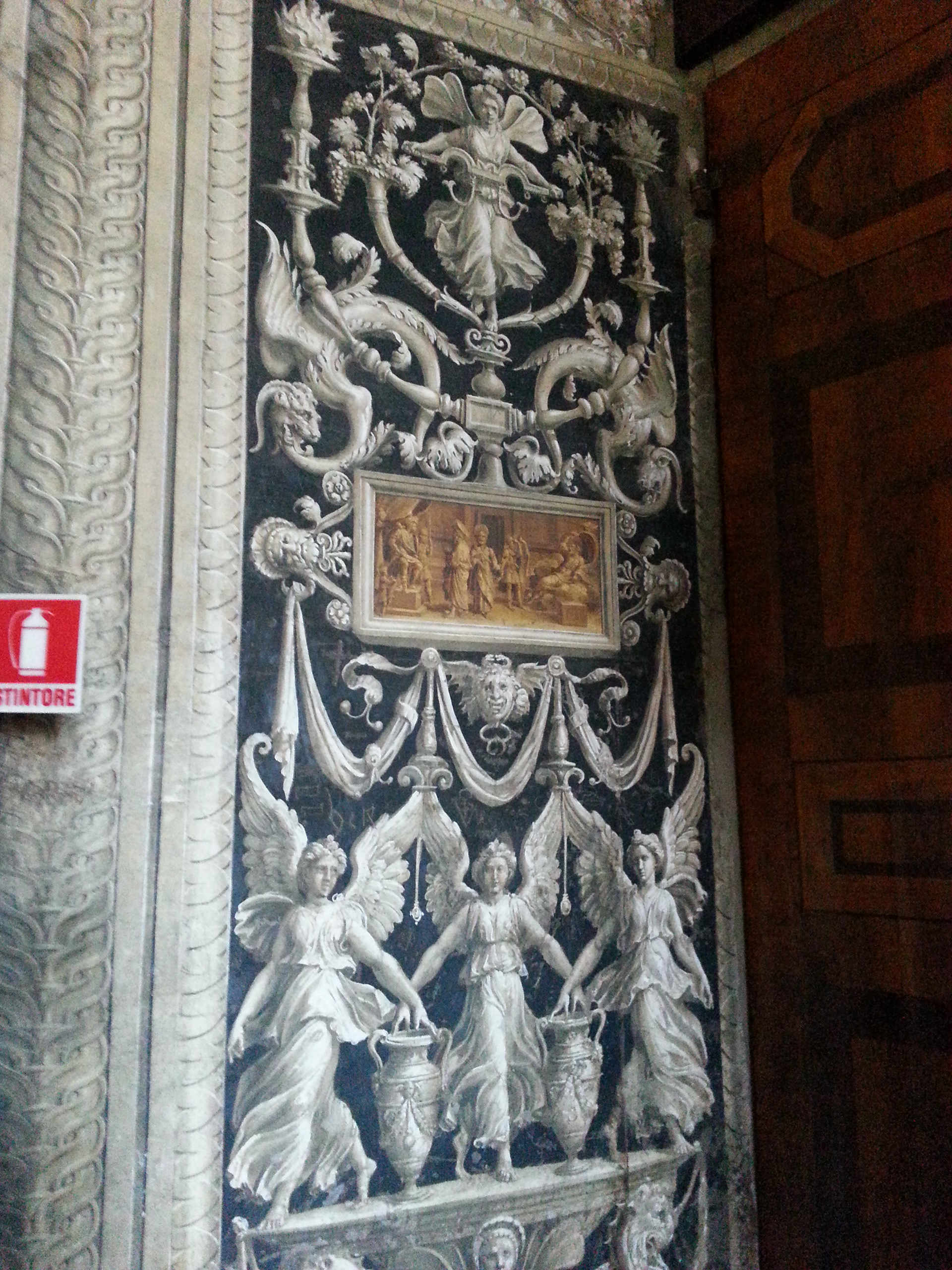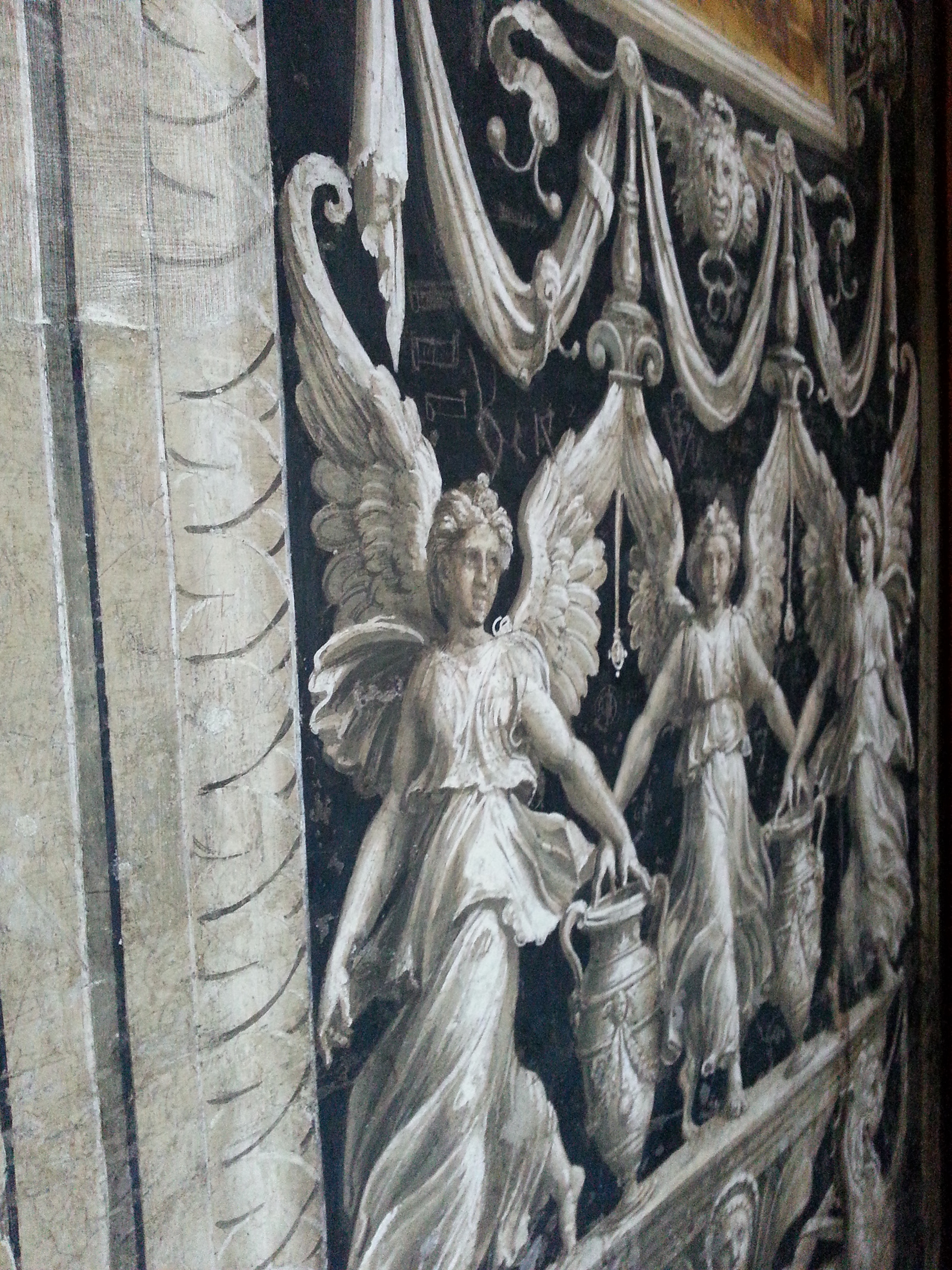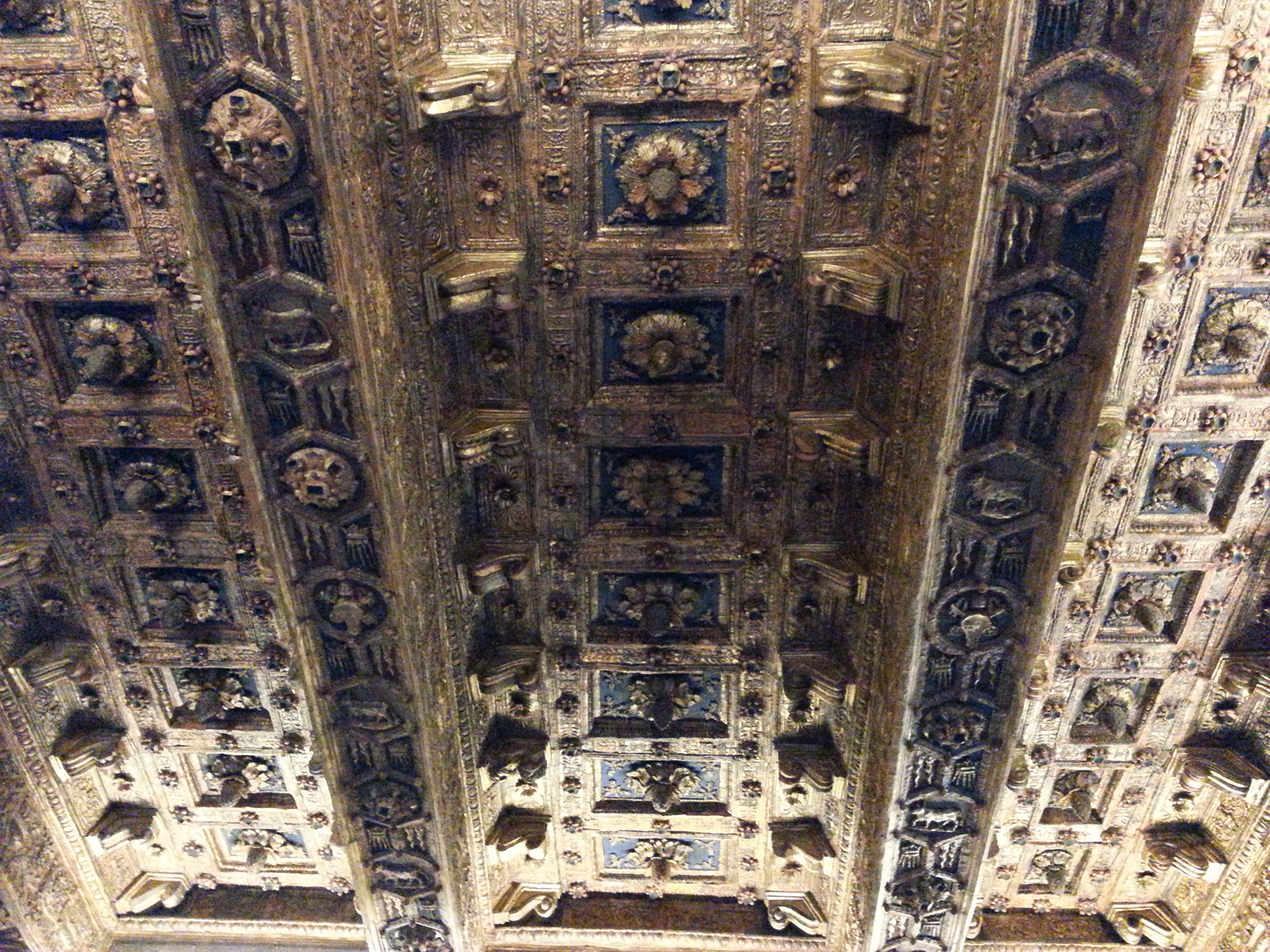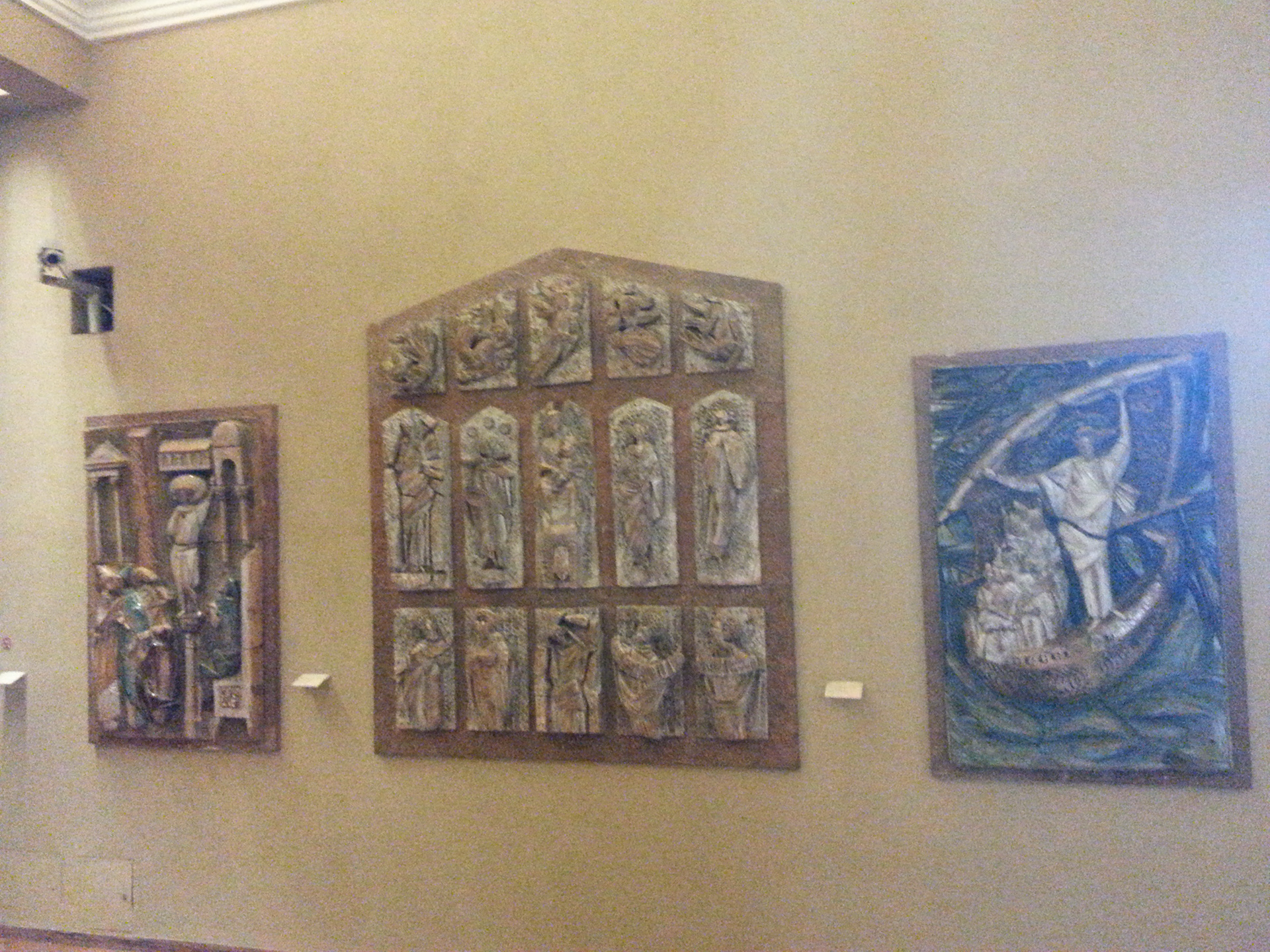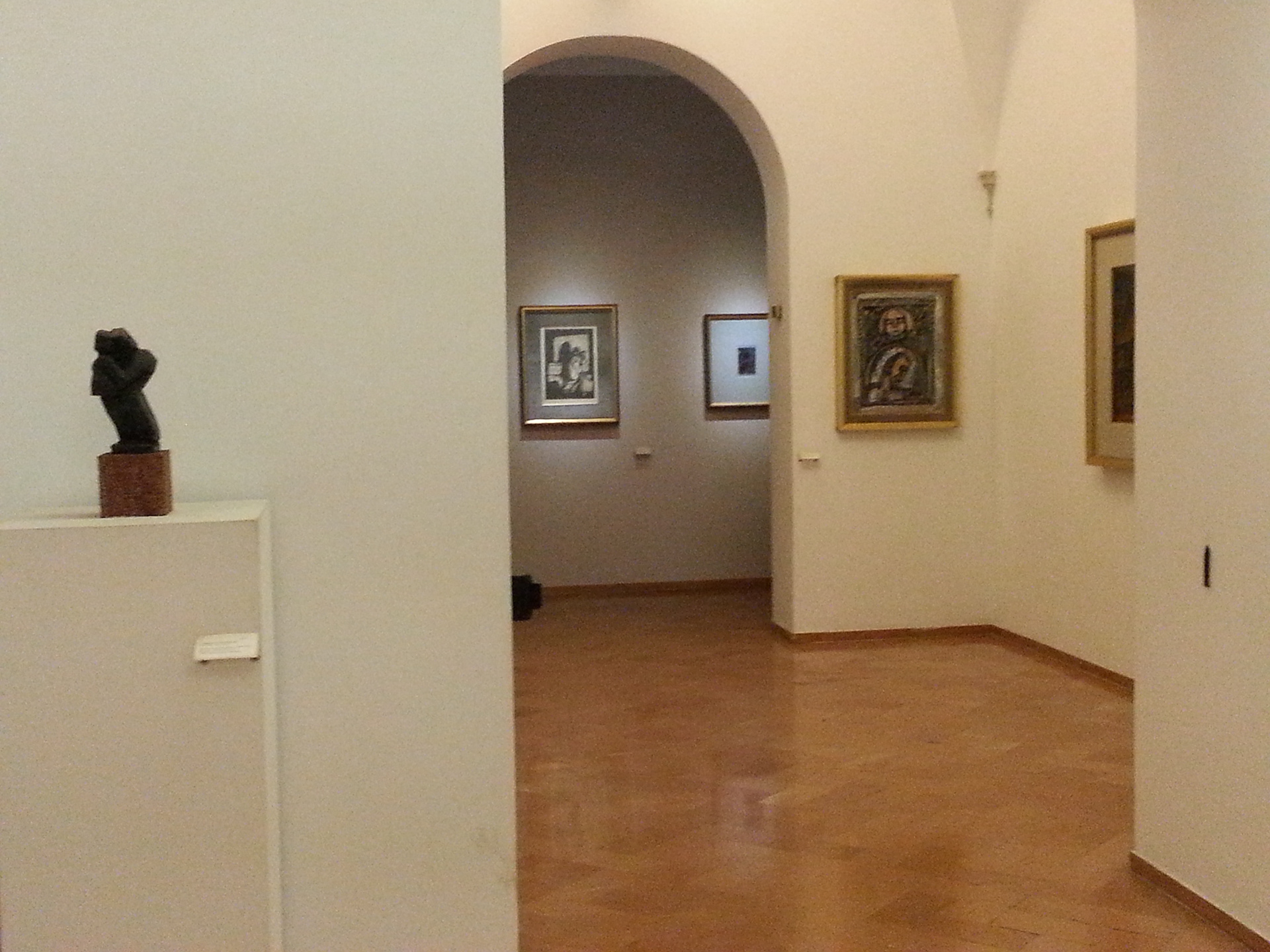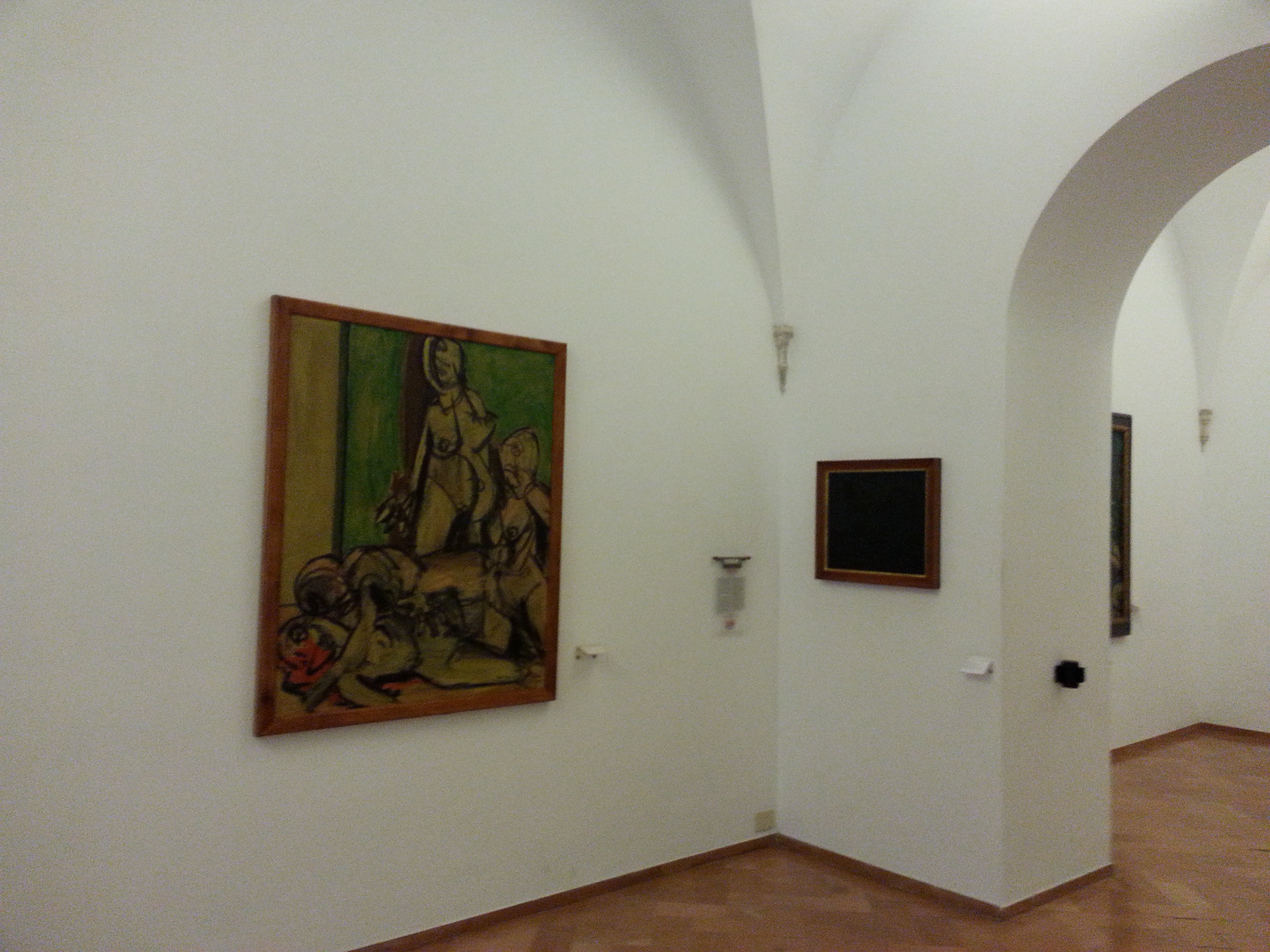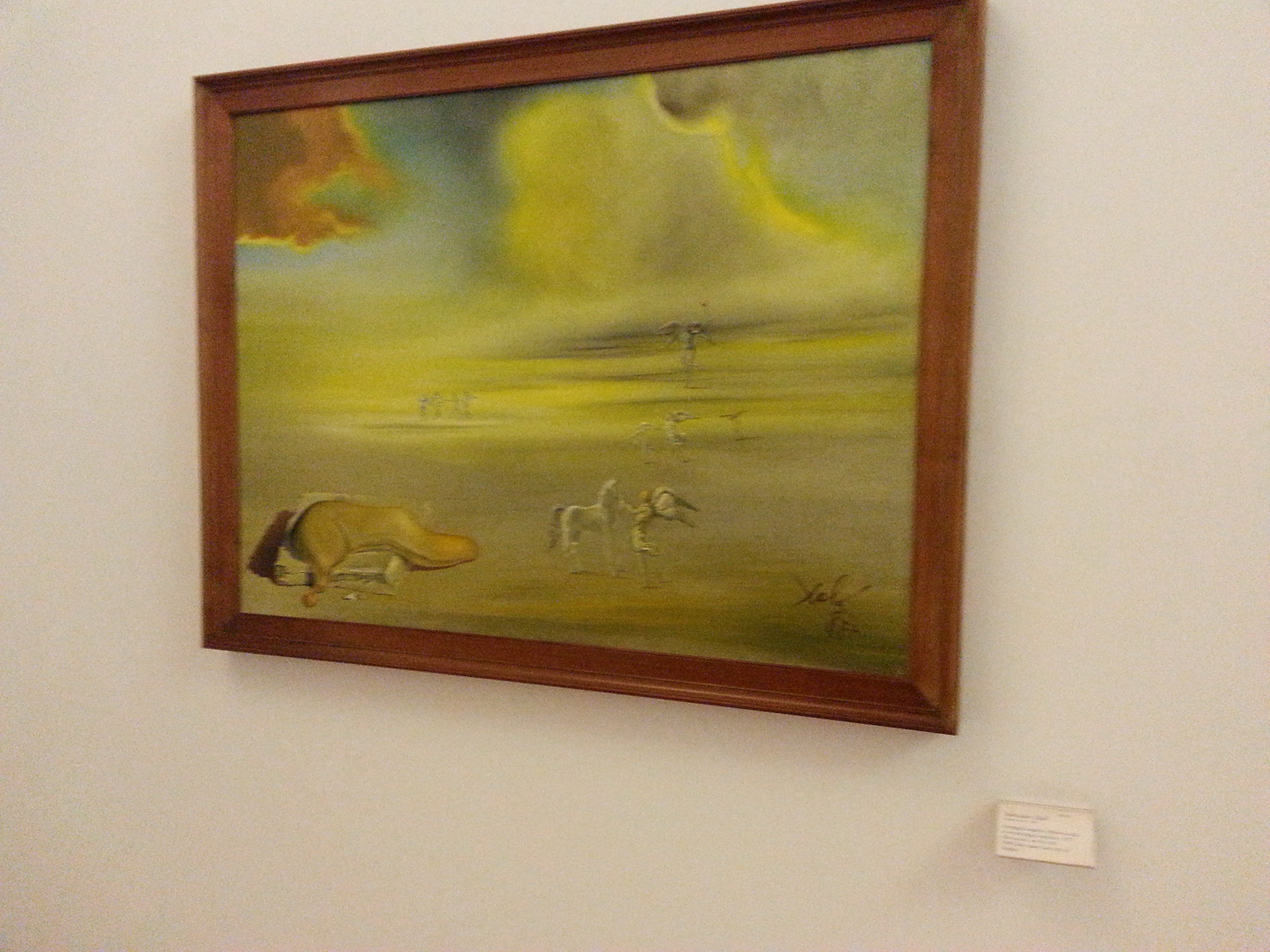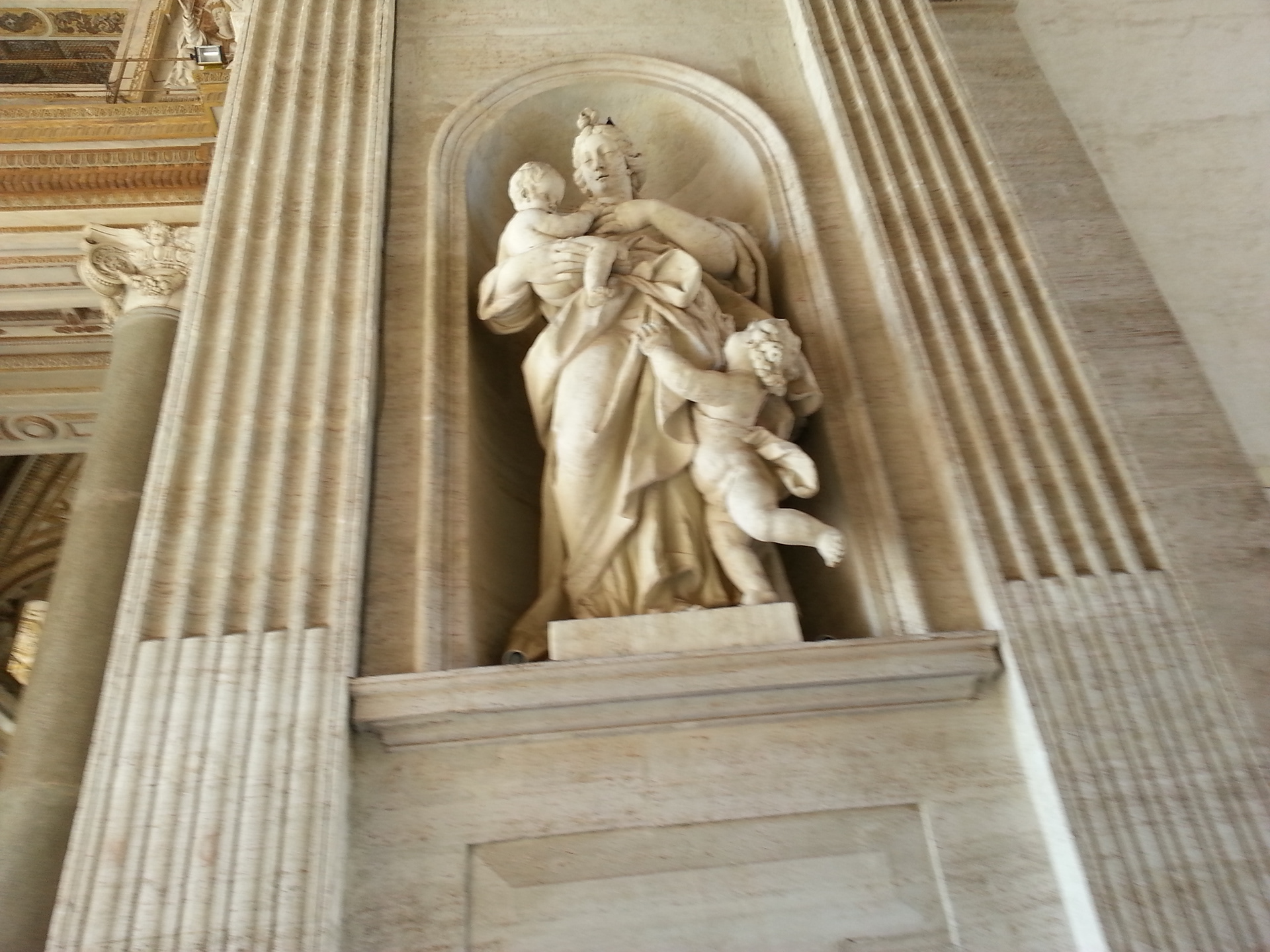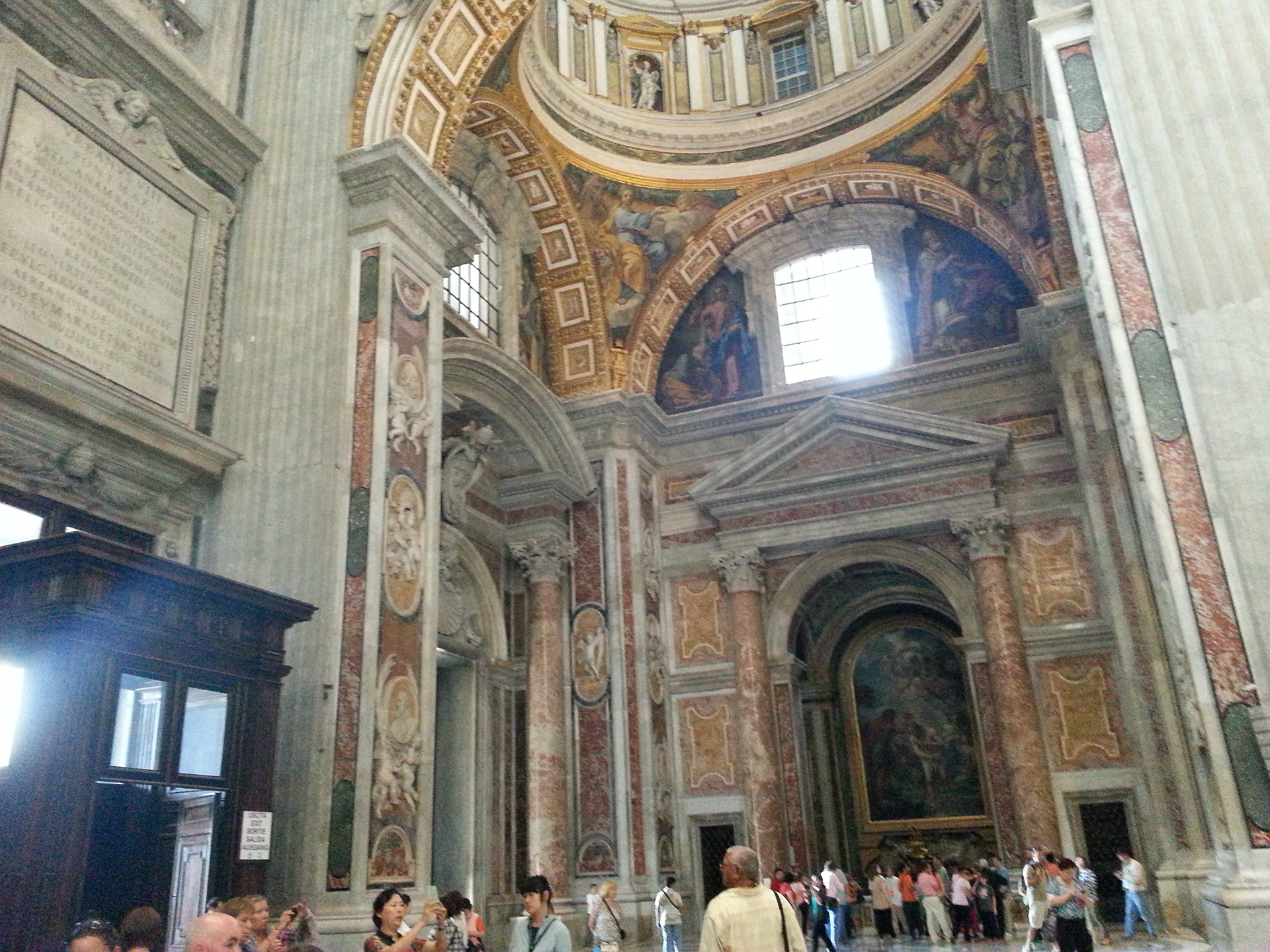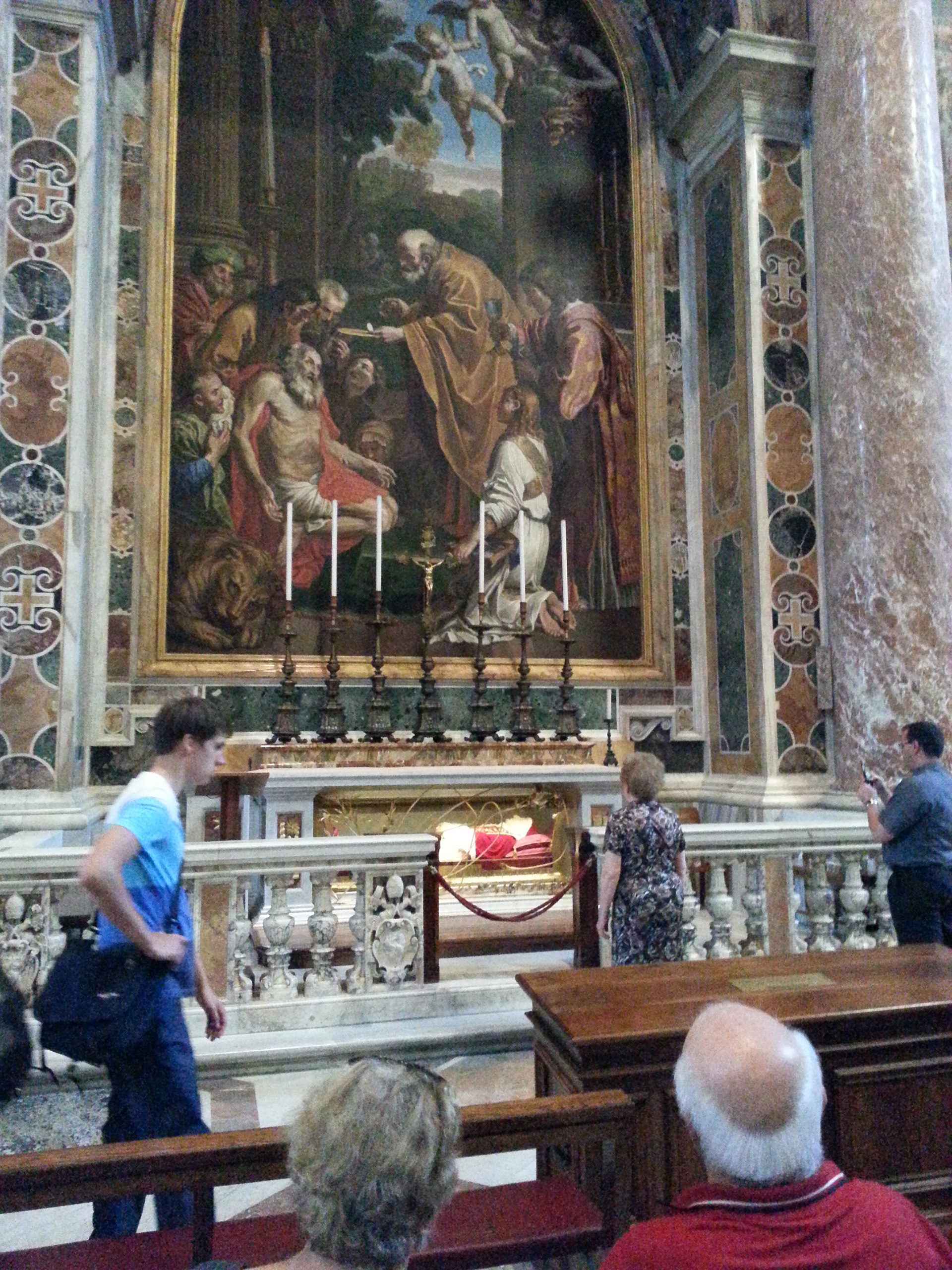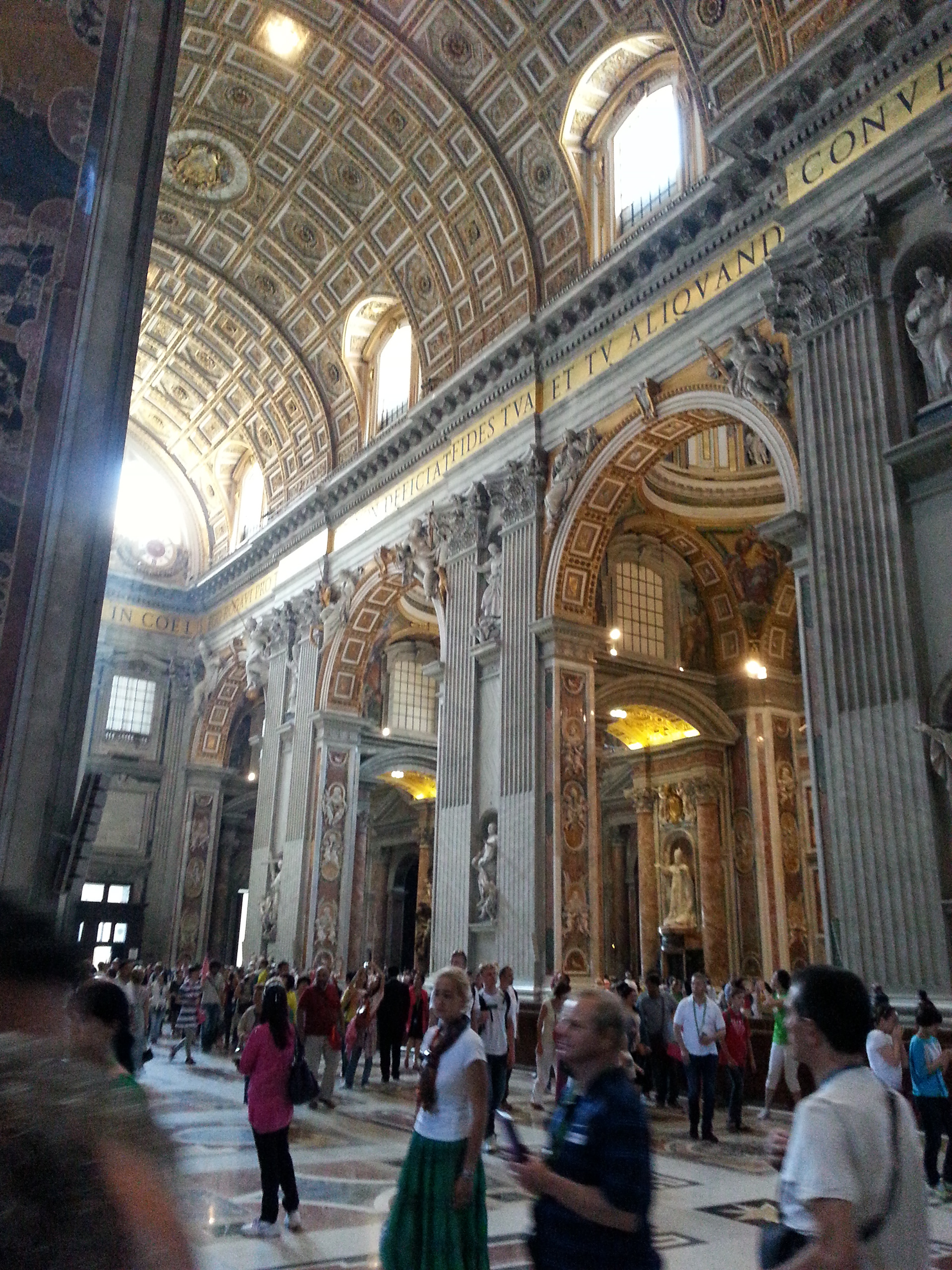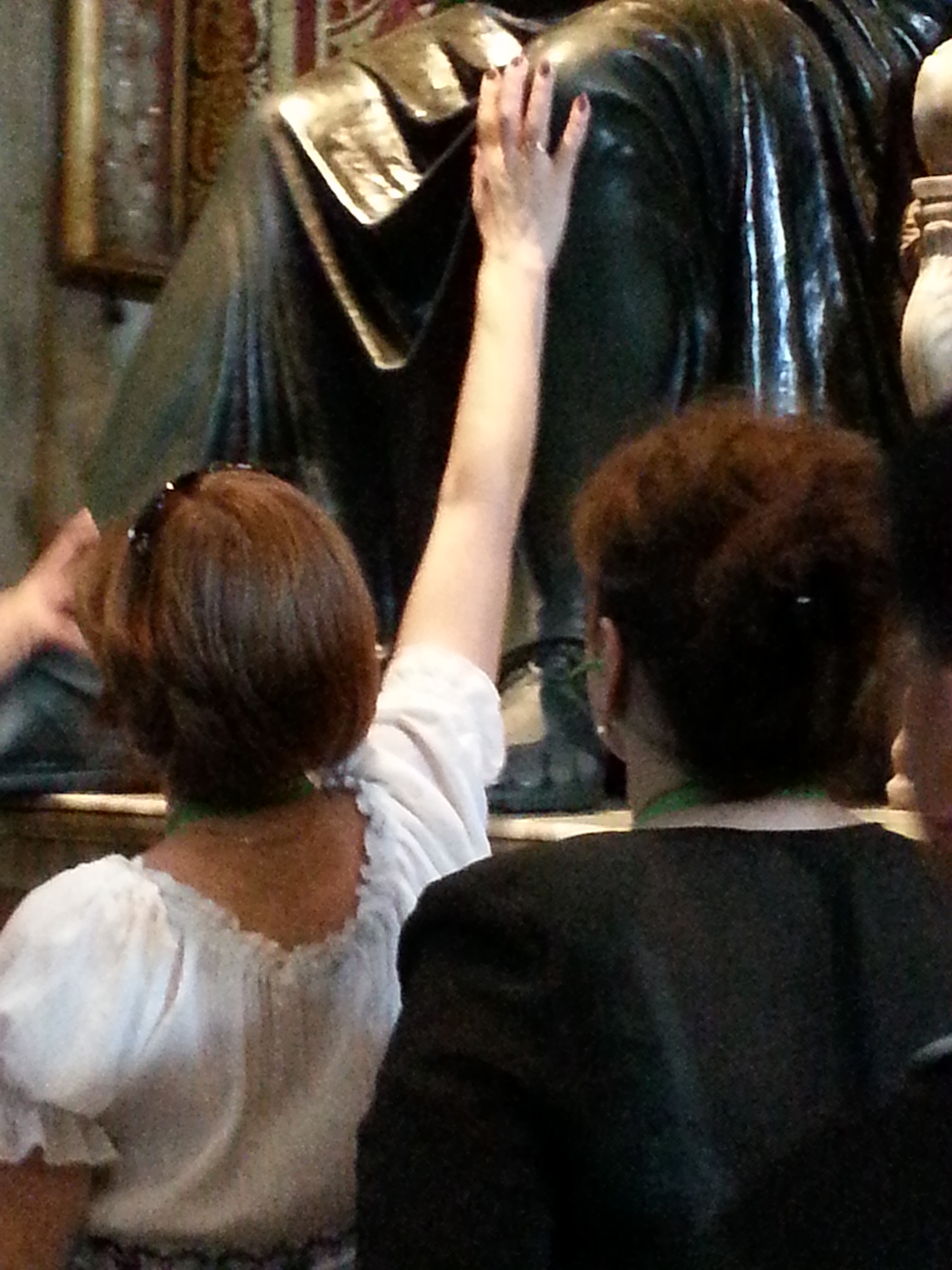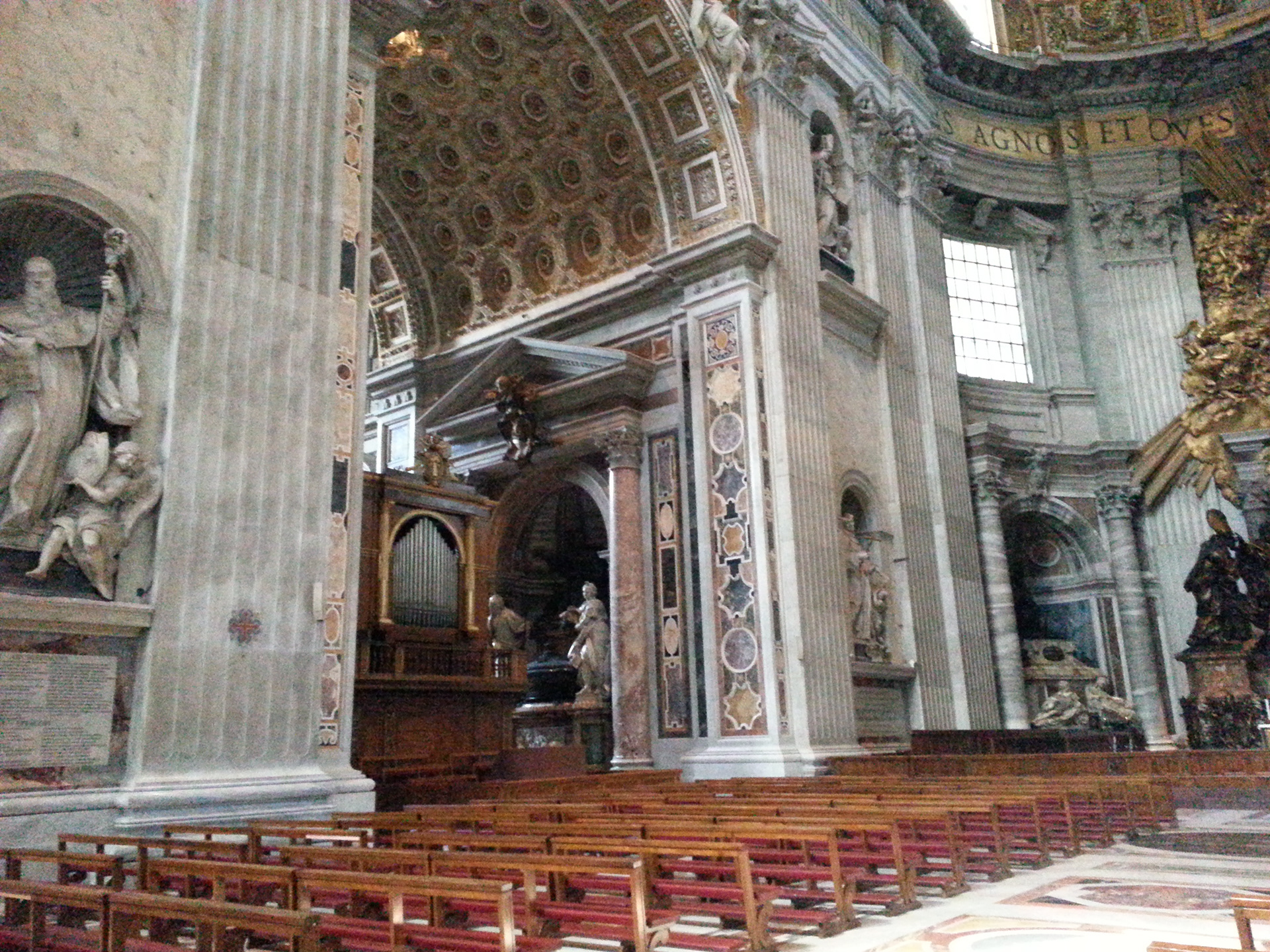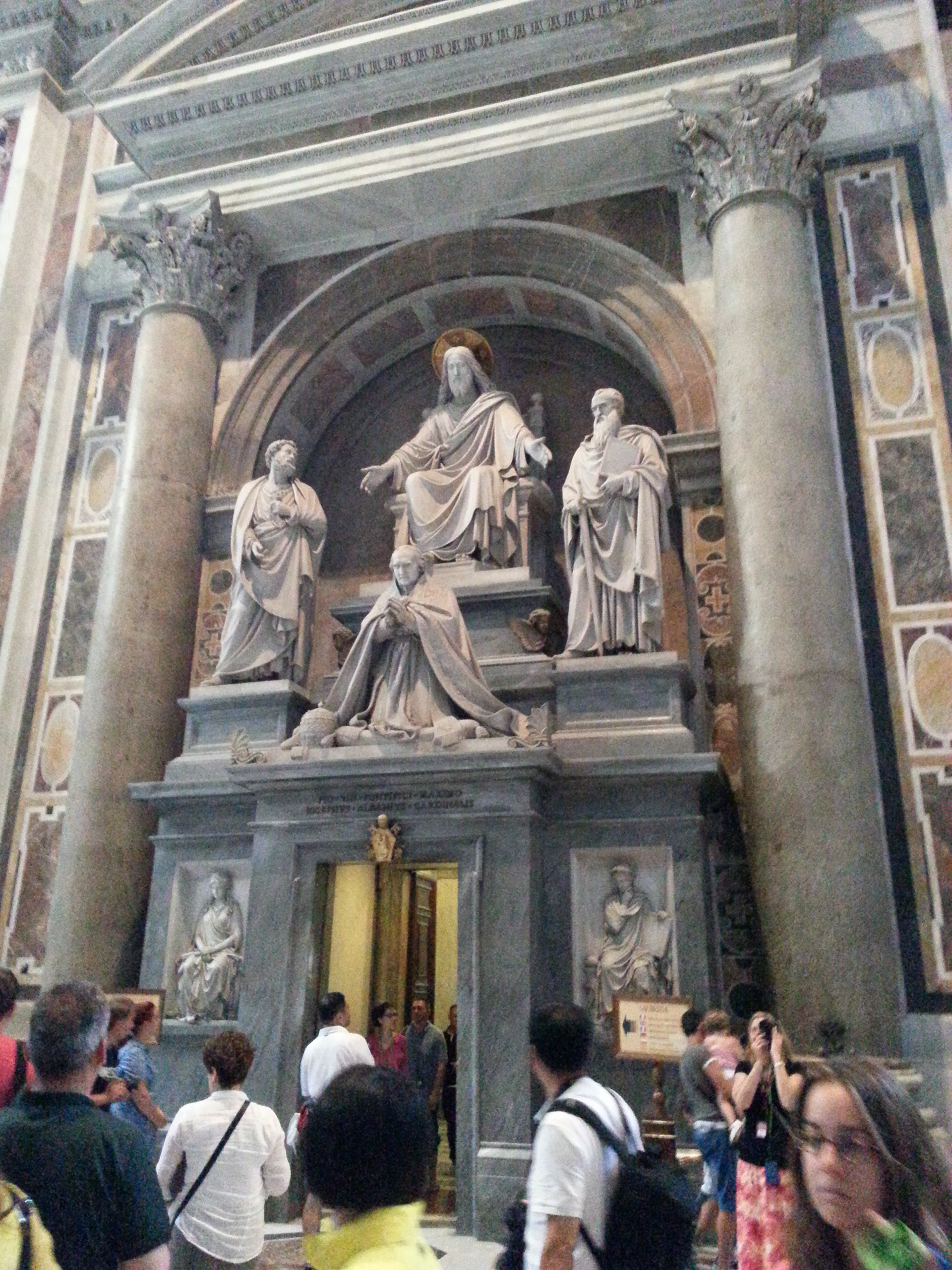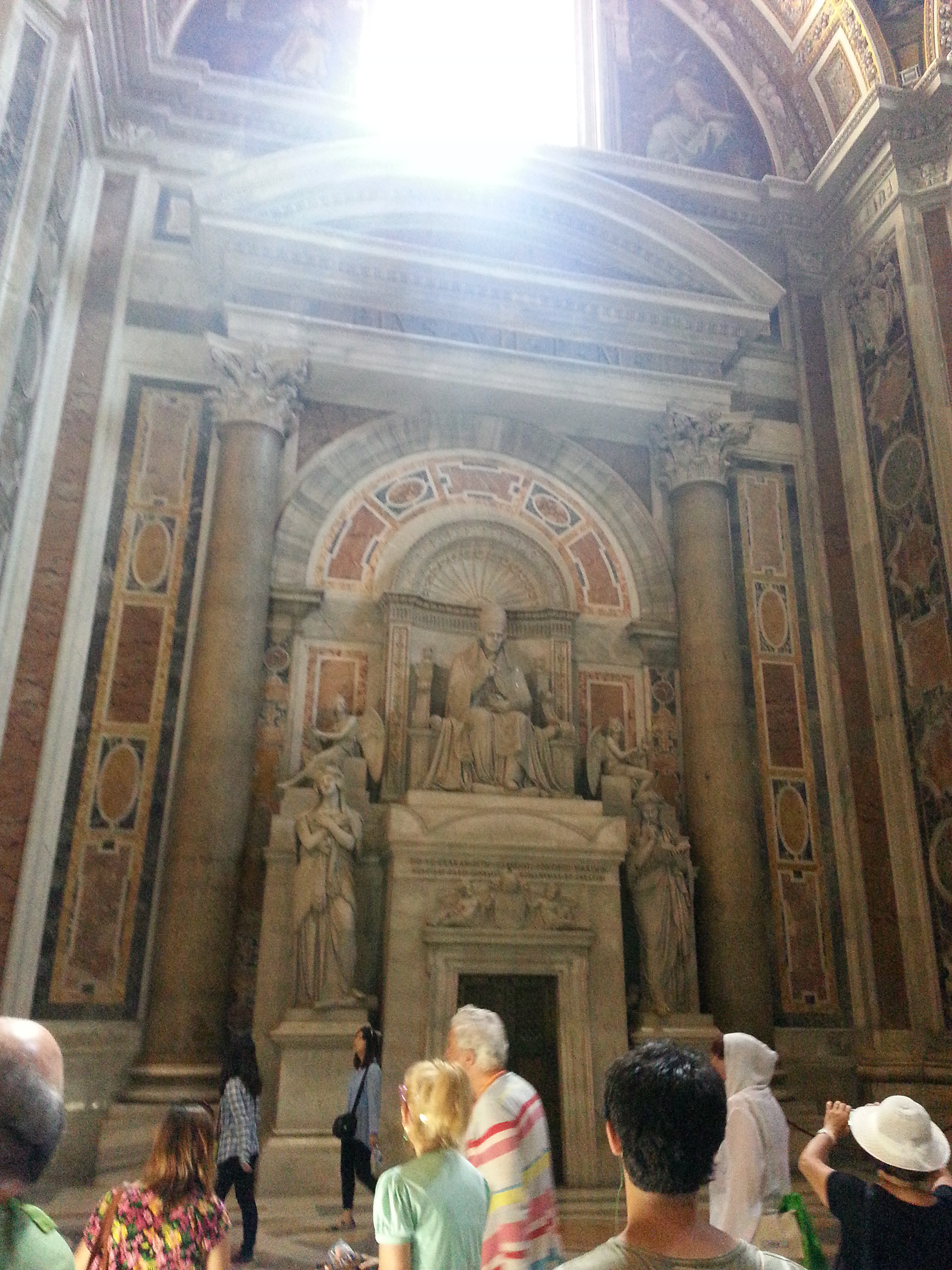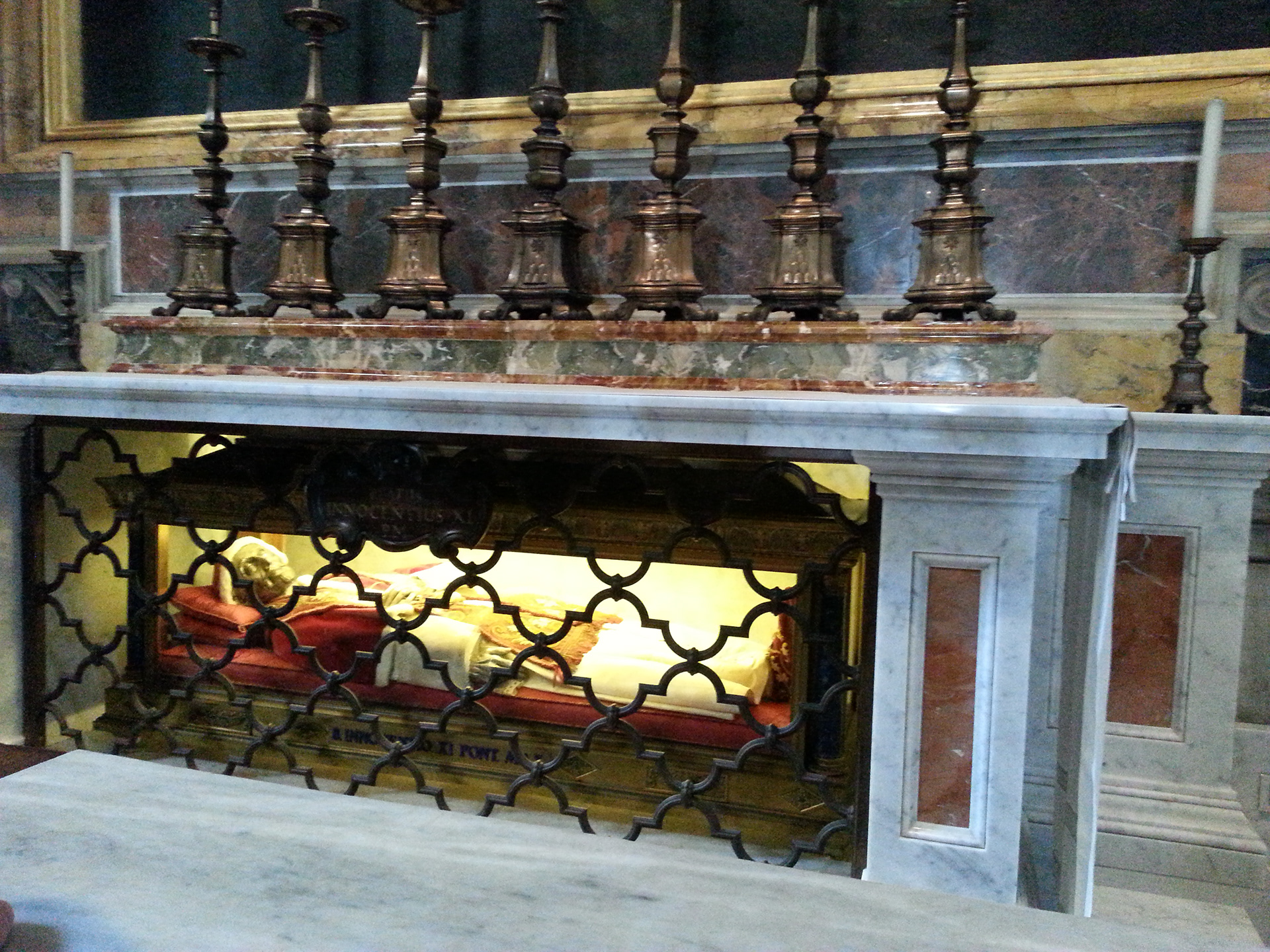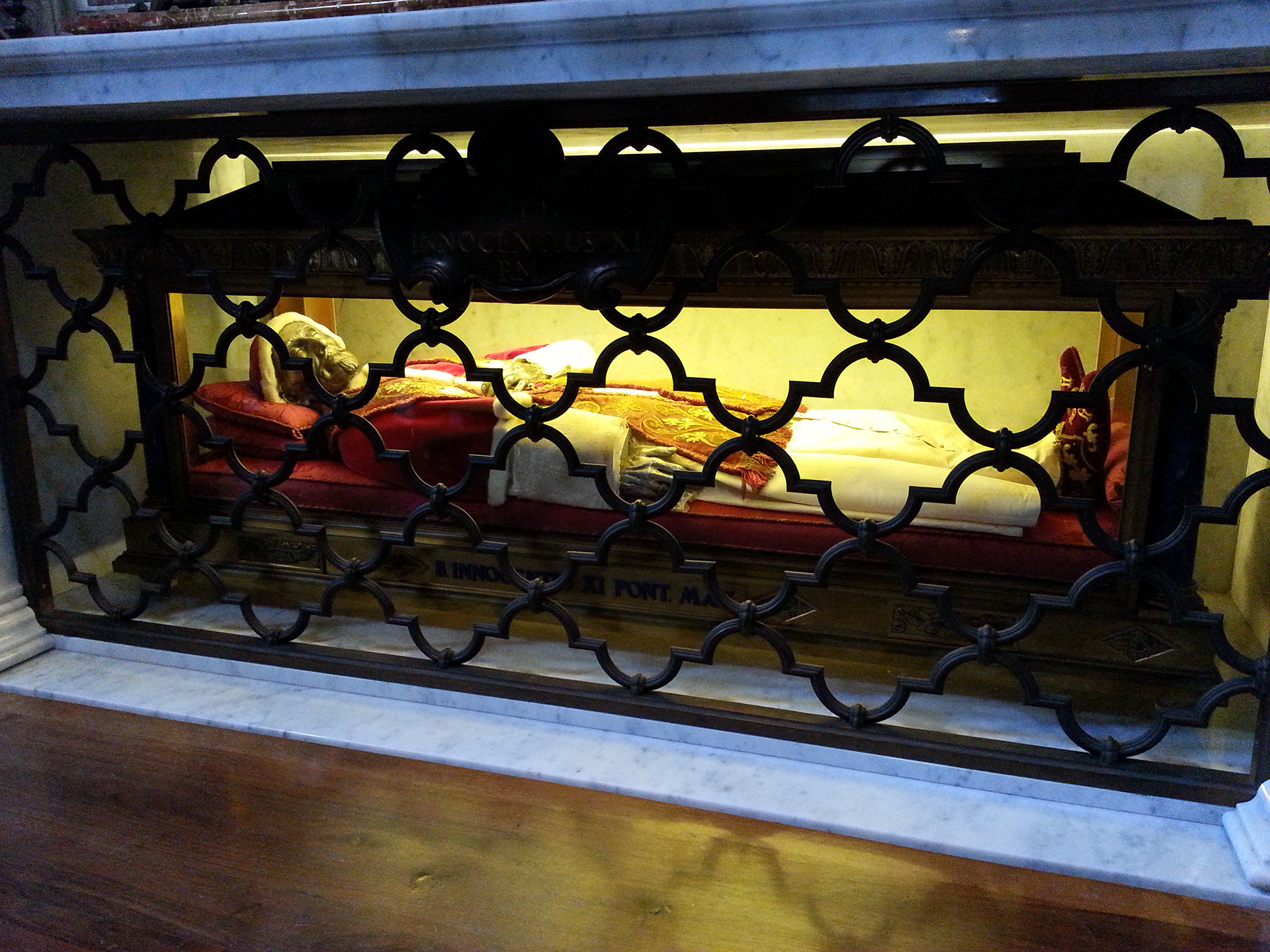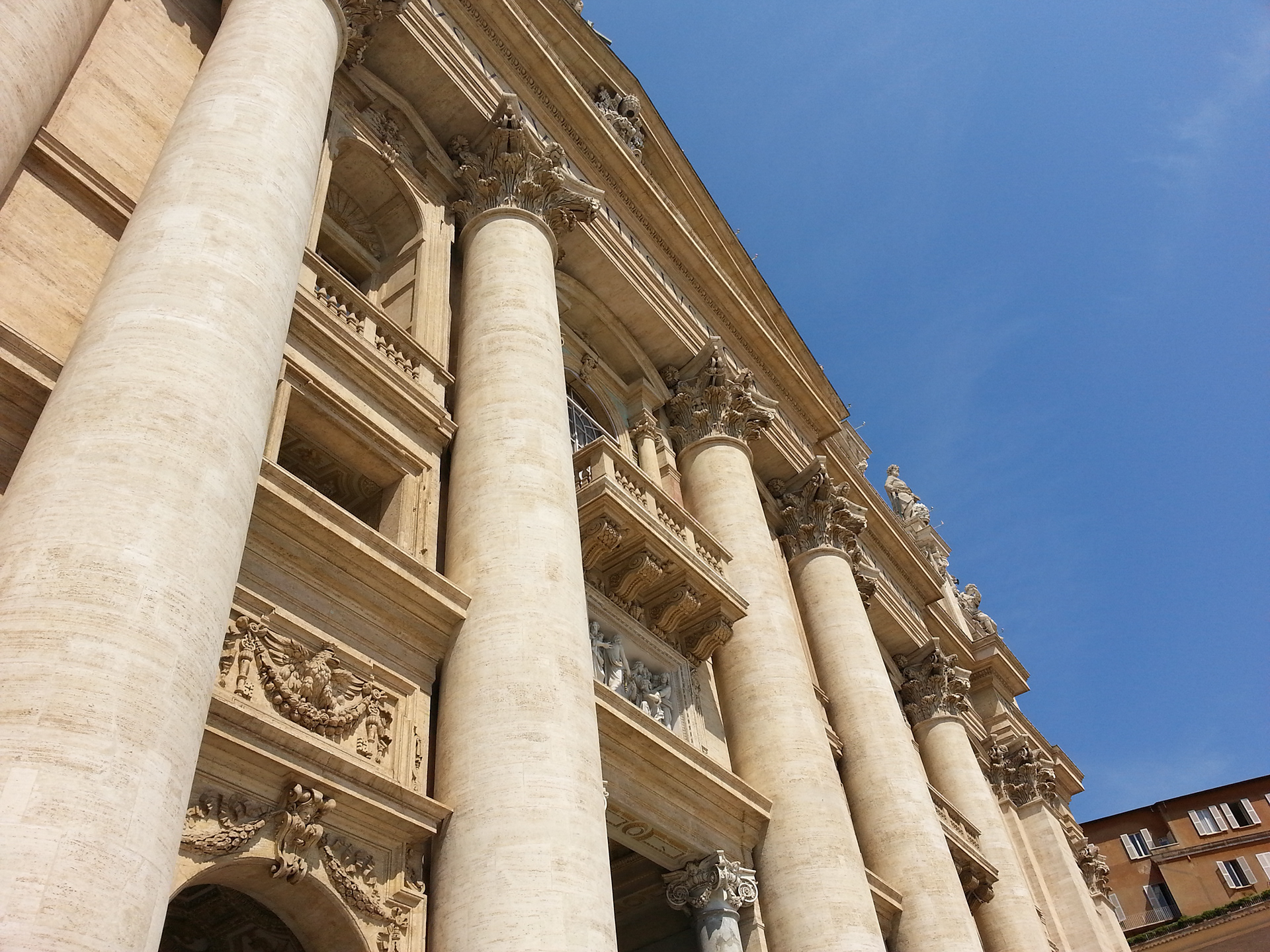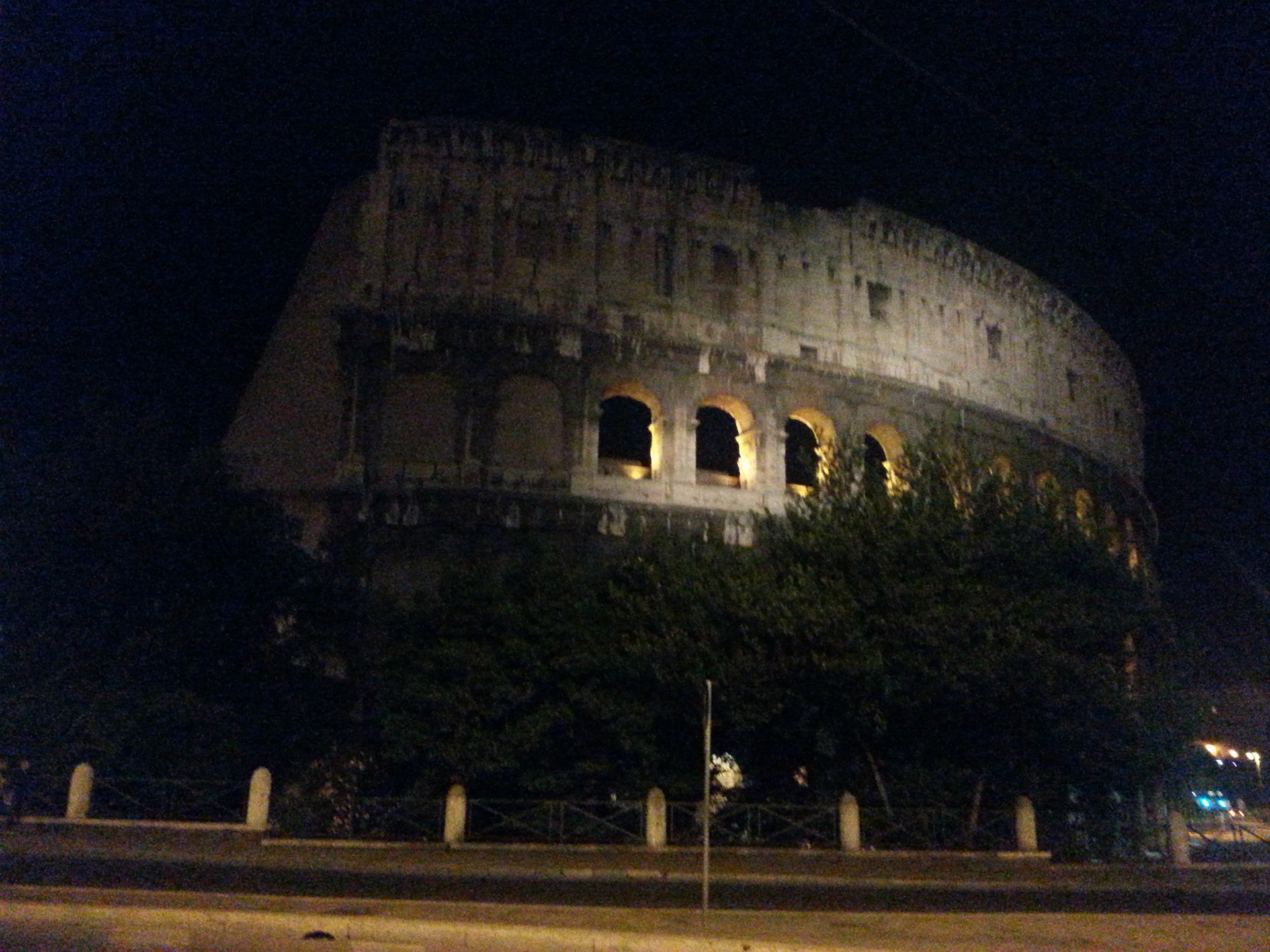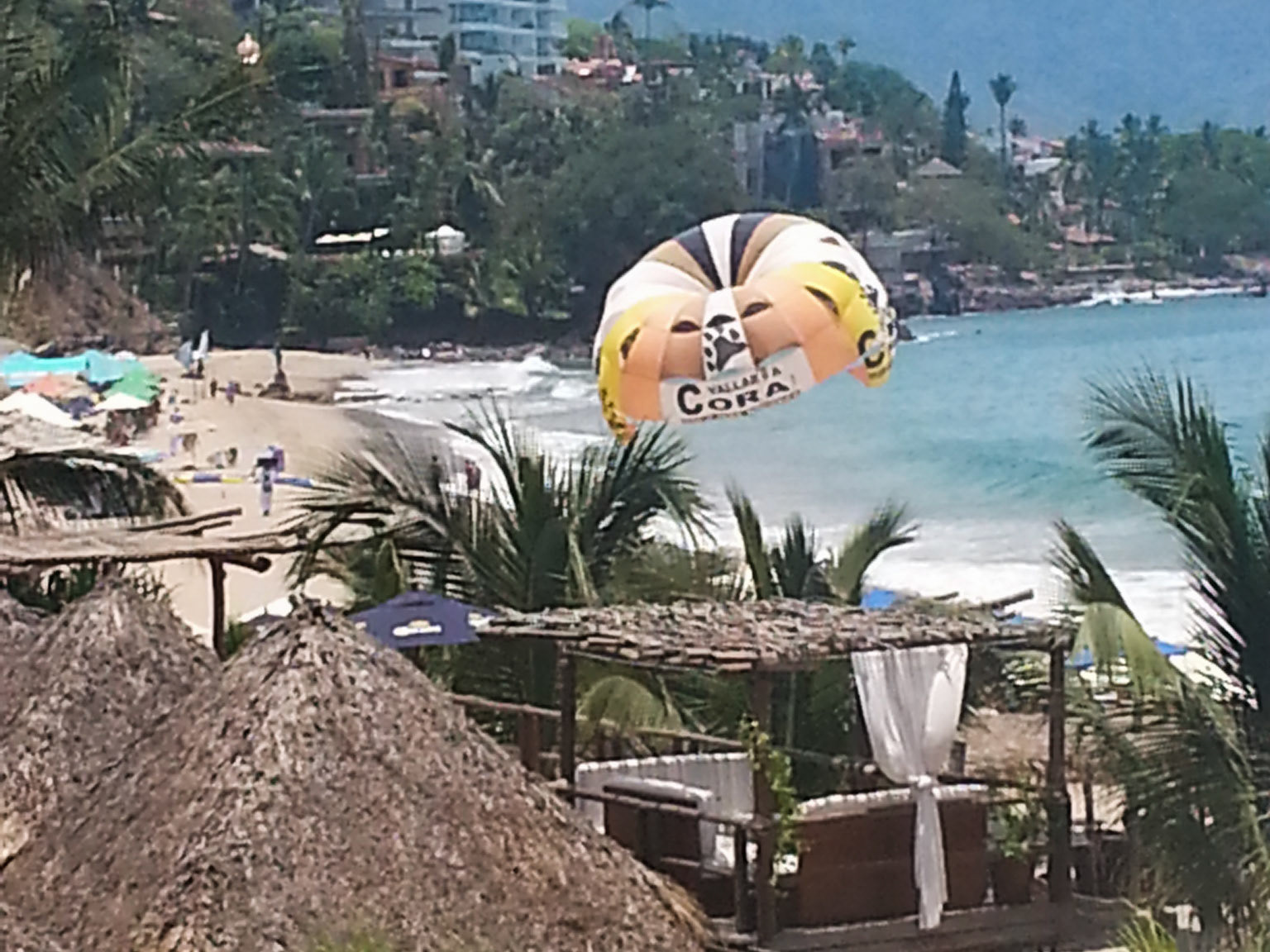
The Vatican Museums (Italian: Musei Vaticani; Latin: Musea Vaticana) are the public museums of the Vatican City. They display works from the immense collection amassed by the Catholic Church and the papacy throughout the centuries, including several of the most renowned Roman sculptures and most important masterpieces of Renaissance art in the world. The museums contain roughly 70,000 works, of which 20,000 are on display, and currently employ 640 people who work in 40 different administrative, scholarly, and restoration departments.

Awaiting entrance to the Vatican museums in the grand foyer.

View of St. Peter's Basilica as one enters the grounds of the museums.

St. Peter's Basilica

The Column of Antoninus Pius (Italian: Colonna di Antonino Pio) is a Roman honorific column in Rome, Italy, devoted in AD 161 to the Roman emperor Antoninus Pius, in the Campus Martius, on the edge of the hill now known as Monte Citorio, and set up by his successors, the co-emperors Marcus Aurelius and Lucius Verus.

Sam Luna in front of St. Peter's Basilica.

Cortile della Pinacoteca-Vatican City

Vatican Museum grounds.

Sphere Within Sphere (Sfera con sfera) is a bronze sculpture by Italian sculptor Arnaldo Pomodoro. Versions of the sculpture (diameters vary) can be seen in many settings worldwide, including Vatican Museums, Rome.

The Pinecone Courtyard, or the Cortile della Pigna, is the first main courtyard you pass through on your way to the Sistine Chapel in the Vatican Museums.

Sphere Within Sphere (Sfera con sfera) detail.

Sphere Within Sphere (Sfera con sfera) detail.

Sphere Within Sphere (Sfera con sfera) detail.

Sphere Within Sphere (Sfera con sfera) detail.

Sphere Within Sphere (Sfera con sfera) detail.

Sphere Within Sphere (Sfera con sfera) detail.

Sphere Within Sphere (Sfera con sfera) detail.

The Pinecone Courtyard, or the Cortile della Pigna, is the first main courtyard you pass through on your way to the Sistine Chapel in the Vatican Museums.

The Pinecone Courtyard, or the Cortile della Pigna, is the first main courtyard you pass through on your way to the Sistine Chapel in the Vatican Museums.

The art gallery was housed in the Borgia Apartment until Pius XI ordered construction of a dedicated building. The new building, designed by Luca Beltrami, was inaugurated on 27 October 1932.

Base of the Pinecone.

The Pinecone Courtyard, or the Cortile della Pigna, is the first main courtyard you pass through on your way to the Sistine Chapel in the Vatican Museums.

Sala a Croce Greca of the Pio Clementino Museum of the Vatican

Sarcophagus of Constantia made from red porphyry in Greek Cross Hall (Sala a Croce Greca), Museo Pio Clementino, Vatican Museums, Rome, Italy

Sarcophagus of Constantia made from red porphyry in Greek Cross Hall (Sala a Croce Greca), Museo Pio Clementino, Vatican Museums, Rome, Italy

“Drunken Satyr” first century AD from a Hellenistic original of the school of Pergamum, in Egyptian stone, called grovacca (greywacke), quarried in Uadi Hammamat.

Pan pulling a thorn from the foot of a Satyr. Marble. Roman copy of an original of the late 2nd or early 1st century BC Rome, Vatican Museums.

Artemis Ephesia

Two hallways that you will pass through on your way to the Sistine Chapel are the Tapestries Hall (with 17th-century weavings based on drawings by Raphael) and the Map Hall.

“Adoration of the Shepherds”

“Maffeo Barberini graduates at Pisa University”

“Maffeo Barberini regulates the outflow of Lake Trasimeno”

“Adoration of the Magi”

Three tapestries with the “Massacre of the Innocents”

Tapestries Hall

Three tapestries with the “Massacre of the Innocents”

"Massacre of the Innocents" detail.

“Resurrection”

“Resurrection” detail.

“Supper at Emmaus”

The fresco scenes that line the barrel-vaulted ceiling in the Gallery of Maps depict a variety of saints, apostles, martyrs, and other figures of Christianity. The figures within these frescoes can be linked to their location on the map, which is found on the wall just below the paintings.

Two hallways that you will pass through on your way to the Sistine Chapel are the Tapestries Hall (with 17th-century weavings based on drawings by Raphael) and the Gallery of Maps Hall.

Corsica

The Gallery of Maps (Italian: Galleria delle carte geografiche) is a gallery located on the west side of the Belvedere Courtyard in the Vatican containing a series of painted topographical maps of Italy based on drawings by friar and geographer Ignazio Danti.

The amazing maps in the Galleria delle Carte Geografiche reflect the topography of Italy by Ignazio Danti frozen into the years 1580-5, with some fanciful decorative elements.

Even more than the ceiling's beautiful grandeur, the frescoes' symbolism and geographic placement within the great hall are astonishing. The fresco scenes that line the barrel-vaulted ceiling depict a variety of saints, apostles, martyrs, and other figures of Christianity. The figures within these frescoes can be linked to their location on the map, which is found on the wall just below the painting.

Even more than the ceiling's beautiful grandeur, the frescoes' symbolism and geographic placement within the great hall are astonishing. The fresco scenes that line the barrel-vaulted ceiling depict a variety of saints, apostles, martyrs, and other figures of Christianity. The figures within these frescoes can be linked to their location on the map, which is found on the wall just below the painting.

Radio Vatican Antenna

Face art detail head statue in Vatican Museum

The Gallery of Maps (Italian: Galleria delle carte geografiche) is a gallery located on the west side of the Belvedere Courtyard in the Vatican containing a series of painted topographical maps of Italy based on drawings by friar and geographer Ignazio Danti.

Gallery of St. Pious V

In the Gallery of San Pio V on the left “Two Flemish tapestries” of the late 1400's by the manufacture of Tournai “The Last Supper.”

In the Gallery of San Pio V on the left “Two Flemish tapestries” of the late 1400's by the manufacture of Tournai “The Last Supper.”

In the Gallery of San Pio V on the right “Two tapestries with Coronation of Mary” from cartoons by the Raphael school and “Religion, Justice and Charity” 1525 by Pieter van Aelst's manufacture

The Battle of Vienna took place at Kahlenberg Mountain near Vienna on 12 September 1683 after the imperial city had been besieged by the Ottoman Empire for two months. The battle was fought by the Holy Roman Empire led by the Habsburg monarchy and the Polish–Lithuanian Commonwealth, both under the command of King John III Sobieski, against the Ottomans and their vassal and tributary states.

The Battle of Vienna marked the first time the Commonwealth and the Holy Roman Empire had cooperated militarily against the Ottomans, and it is often seen as a turning point in history, after which "the Ottoman Turks ceased to be a menace to the Christian world". In the ensuing war that lasted until 1699, the Ottomans lost almost all of Hungary to the Holy Roman Emperor Leopold I.

Battle of Vienna detail.

Mosaic floor tile detail.

Proclamation of the Dogma of the Immaculate Conception. The four rooms decorated by Raphael and his assistants are known as the Raphael Rooms (Stanze di Raffaello) collectively. Individually, they are the Sala di Costantino, the Stanza di Eliodoro, the Stanza della Segnatura and the Stanza dell’Incendio del Borgo, and each is home to some of the most beautifully painted frescoes of the Italian Renaissance.

Proclamation of the Dogma of the Immaculate Conception detail.

Swiss guards, responsible for the personal security of the pope, wear a unique uniform – unchanged since 1506. During the middle ages, Switzerland earned the reputation for having the most reliable soldiers, who were virtually unbeatable and extremely loyal.

The most stunning examples of murals covering the walls and the ceilings are the Raphael Rooms. Raphael was commissioned to decorate the private apartments of Pope Julius II, although he only completed two out of the four rooms prior to his death; the rest were completed by his pupils.

The Hall of Constantine - designed to be used for receptions and official ceremonies and was decorated by the school of Raphael on the basis of drawings by the artist.

The Hall of Constantine - designed to be used for receptions and official ceremonies and was decorated by the school of Raphael on the basis of drawings by the artist.

The Hall of Constantine - The Vision of the Cross is a painting made between 1520 and 1524 by assistants of the Italian renaissance artist Raphael. After the master's death in 1520, Gianfrancesco Penni, Giulio Romano and Raffaellino del Colle from Raphael's workshop worked together to finish the commission to decorate with frescoes the rooms that are now known as the Stanze di Raffaello, in the Apostolic Palace in the Vatican.

The Hall of Constantine - The Battle of the Milvian Bridge took place between the Roman Emperors Constantine I and Maxentius on 28 October 312. It takes its name from the Milvian Bridge, an important route over the Tiber. Constantine won the battle and started on the path that led him to end the Tetrarchy and become the sole ruler of the Roman Empire.

The Hall of Constantine ceiling.

The Hall of Constantine - The Baptism of Constantine is a painting by assistants of the Italian Renaissance artist Raphael. It was most likely painted by Gianfrancesco Penni, between 1517 and 1524.

Mosaic floor tile detail.

Mosaic floor tile detail.

The Hall of Constantine - The Donation of Constantine (Latin: Donatio Constantini) is a forged Roman imperial decree by which the 4th-century emperor Constantine the Great supposedly transferred authority over Rome and the western part of the Roman Empire to the Pope. Composed probably in the 8th century, it was used, especially in the 13th century, in support of claims of political authority by the papacy.

The Liberation of Saint Peter is a fresco painting by the Italian High Renaissance artist Raphael. It was painted in 1514 as part of Raphael's commission to decorate with frescoes the rooms that are now known as the Stanze di Raffaello, in the Apostolic Palace in the Vatican. It is in the Stanza di Eliodoro, which is named after The Expulsion of Heliodorus from the Temple. The painting shows how Saint Peter was liberated from Herod's prison by an angel, as described in Acts 12.
![The Liberation of Saint Peter is a fresco painting by the Italian High Renaissance artist Raphael.[1] It was painted in 1514 as part of Raphael's commission to decorate with frescoes the rooms that are now known as the Stanze di Raffaello, in the Apostolic Palace in the Vatican. It is in the Stanza di Eliodoro, which is named after The Expulsion of Heliodorus from the Temple. The painting shows how Saint Peter was liberated from Herod's prison by an angel, as described in Acts 12.](data:image/gif;base64,R0lGODlhAQABAIAAAAAAAP///yH5BAEAAAAALAAAAAABAAEAAAIBRAA7)
The Liberation of Saint Peter is a fresco painting by the Italian High Renaissance artist Raphael.[1] It was painted in 1514 as part of Raphael's commission to decorate with frescoes the rooms that are now known as the Stanze di Raffaello, in the Apostolic Palace in the Vatican. It is in the Stanza di Eliodoro, which is named after The Expulsion of Heliodorus from the Temple. The painting shows how Saint Peter was liberated from Herod's prison by an angel, as described in Acts 12.

The Meeting of Leo I and Attila is a fresco by the Italian Renaissance artist Raphael. It was painted from 1513 to 1514 as part of Raphael's commission to decorate the rooms that are now known as the Stanze di Raffaello, in the Apostolic Palace in the Vatican. It is in the Stanza di Eliodoro, which is named after The Expulsion of Heliodorus from the Temple.
![The Liberation of Saint Peter is a fresco painting by the Italian High Renaissance artist Raphael.[1] It was painted in 1514 as part of Raphael's commission to decorate with frescoes the rooms that are now known as the Stanze di Raffaello, in the Apostolic Palace in the Vatican. It is in the Stanza di Eliodoro, which is named after The Expulsion of Heliodorus from the Temple. The painting shows how Saint Peter was liberated from Herod's prison by an angel, as described in Acts 12.](data:image/gif;base64,R0lGODlhAQABAIAAAAAAAP///yH5BAEAAAAALAAAAAABAAEAAAIBRAA7)
The Liberation of Saint Peter is a fresco painting by the Italian High Renaissance artist Raphael.[1] It was painted in 1514 as part of Raphael's commission to decorate with frescoes the rooms that are now known as the Stanze di Raffaello, in the Apostolic Palace in the Vatican. It is in the Stanza di Eliodoro, which is named after The Expulsion of Heliodorus from the Temple. The painting shows how Saint Peter was liberated from Herod's prison by an angel, as described in Acts 12.

Stanza di Eliodoro ("Room of Heliodorus") ceiling.

Stanza di Eliodoro ("Room of Heliodorus") ceiling detail.

The Expulsion of Heliodorus from the Temple is a fresco of the Italian renaissance painter Raphael. It was painted between 1511 and 1512 as part of Raphael's commission to decorate with frescoes the rooms that are now known as the Stanze di Raffaello, in the Apostolic Palace in the Vatican.

The Parnassus (Italian: Il Parnaso, referring to Mount Parnassus) is a fresco painting by the Italian High Renaissance artist Raphael in the Raphael Rooms ("Stanze di Raffaello"), in the Palace of the Vatican in Rome, painted at the commission of Pope Julius II. It was probably the second wall of the Stanza della Segnatura to be painted between 1509 and 1511, after La Disputa and before The School of Athens, which occupy other walls of the room.

The Disputation of the Sacrament (Italian: La disputa del sacramento), or Disputa, is a painting by the Italian Renaissance artist Raphael. It was painted between 1509 and 1510 as the first part of Raphael's commission to decorate with frescoes the rooms that are now known as the Stanze di Raffaello, in the Apostolic Palace in the Vatican. At the time, this room was known as the Stanza della Segnatura, and was the private papal library where the supreme papal tribunal met.

The Disputation of the Sacrament detail.

The Cardinal and Theological Virtues is a lunette fresco by Raphael found on the south wall of the Stanza della Segnatura in the Apostolic Palace of the Vatican. Three of the cardinal virtues are personified as statuesque women seated in a bucolic landscape and the theological virtues are depicted by putti. The fresco was a part of Raphael's commission to decorate the private apartments of Pope Julius II. These rooms are now known as the Stanze di Raffaello. After completing his three monumental frescoes Disputation of the Holy Sacrament, The Parnassus, and The School of Athens in the Stanza della Segnatura, Raphael painted the Cardinal and Theological Virtues in 1511.

The Cardinal and Theological Virtues is a lunette fresco by Raphael found on the south wall of the Stanza della Segnatura in the Apostolic Palace of the Vatican. Three of the cardinal virtues are personified as statuesque women seated in a bucolic landscape and the theological virtues are depicted by putti. The fresco was a part of Raphael's commission to decorate the private apartments of Pope Julius II. These rooms are now known as the Stanze di Raffaello. After completing his three monumental frescoes Disputation of the Holy Sacrament, The Parnassus, and The School of Athens in the Stanza della Segnatura, Raphael painted the Cardinal and Theological Virtues in 1511.

The School of Athens (Italian: Scuola di Atene) is a fresco by the Italian Renaissance artist Raphael. It was painted between 1509 and 1511 as a part of Raphael's commission to decorate the rooms now known as the Stanze di Raffaello, in the Apostolic Palace in the Vatican.

The School of Athens detail.

The School of Athens detail.

The School of Athens detail depicting Michelangelo.

The Disputation of the Sacrament detail.

Delivery of the Decretals to Pope Gregory IX, Room of the Signature, Raphael Rooms, Apostolic Palace, Vatican Museums, Rome, Italy.

The Coronation of Charlemagne is a painting by the workshop of the Italian Renaissance artist Raphael. Though it is believed that Raphael did make the designs for the composition, the fresco was probably painted by Gianfrancesco Penni. The painting was part of Raphael's commission to decorate the rooms that are now known as the Stanze di Raffaello, in the Apostolic Palace in the Vatican. It is in the room that was named after The Fire in the Borgo, the Stanza dell'incendio del Borgo.

The Fire in the Borgo is a painting created by the workshop of the Italian Renaissance artist Raphael between 1514 and 1517. Though it is assumed that Raphael did make the designs for the complex composition, the fresco was most likely painted by his assistant Giulio Romano. The painting was part of Raphael's commission to decorate the rooms that are now known as the Stanze di Raffaello, in the Apostolic Palace in the Vatican. It depicts Pope Leo IV halting a fire in 847 with a benediction from a balcony in front of the Old St. Peter's Basilica. The mural lends its name to the Stanza dell'incendio del Borgo ("The Room of the Fire in the Borgo").

Fire in the Borgo detail.

The naval Battle of Ostia took place in 849 in the Tyrrhenian Sea between Muslim army and an Italian league of Papal, Neapolitan, Amalfitan, and Gaetan ships. The battle ended in favor of the Italian league, as they defeated the pirates. It is one of the few events to occur in southern Italy during the ninth century that is still commemorated today, largely through the walls named after Leo and for the Renaissance painting Battaglia di Ostia by Raphael.

Stanza dell'incendio del Borgo ("The Room of the Fire in the Borgo") ceiling.

Carved wooden ceiling of Pope Alexander VI Borgia's private bedroom (Borgia Seal over fireplace hacked off) - Borgia Apartments, Vatican, Rome

The Collection of Modern Religious Art at the Vatican Museum contains nearly 800 works of art.

The Collection of Modern Religious Art at the Vatican Museum contains nearly 800 works of art.

The Collection of Modern Religious Art at the Vatican Museum contains nearly 800 works of art. This is a bronze image of people praying.

One of three giant collages by artist Henri Matisse.

L'Arbre de Vie (The Tree of Life) (stained-glass window in the apse) Preparatory sketch in 1:1 scale for the Rosary Chapel of Venice, 1949 by artist Henri Matisse.

A Museum placard indicates that 1856 limestone sculpture is by Lucio Fontana. It is entitled "Madonna."

Madonna detail.

The Collection of Modern Religious Art at the Vatican Museum contains nearly 800 works of art.

The Collection of Modern Religious Art at the Vatican Museum contains nearly 800 works of art.

Portrait of Vrania G., 1949 by artist Lucio Fontana.

"Danzante Guerrero" by Diego Rivera

Oil on canvas “El martyrdom de San Esteban” 1944 by José Clemente Orozco (1883/1949)

“Soft Monster in Angelic Landscape” (Monstro molle in un paisaggio angelico), by Salvador Dalí

“Soft Monster in Angelic Landscape” (Monstro molle in un paisaggio angelico), by Salvador Dalí

The canvas The Announcement, produced by Salvador Dalì in 1960, is a preparatory study for The Ecumenical Council, a large-scale painting that the artist completed in the same year.

Scala Regia (Royal Staircase) is a flight of steps in the Vatican City and is part of the formal entrance to the Vatican. It was designed by Gian Lorenzo Bernini.

Waiting to enter St. Peter's Basilica.

Waiting to enter St. Peter's Basilica.

Waiting to enter St. Peter's Basilica.

Ancient roman statue of Mother and two children in St. Peter's Portico.

Waiting to enter St. Peter's Basilica.

St. Peter's Portico detail.

Waiting to enter St. Peter's Basilica.

Waiting to enter St. Peter's Basilica.

Entryway into St. Peter's Basilica.

Interior view of St. Peter's Basilica

Interior view of St. Peter's Basilica

Interior view of St. Peter's Basilica

Interior view of St. Peter's Basilica

The Nave of St. Peter's Basilica, Vatican, Rome.

Interior view of St. Peter's Basilica

The Pietà (1498–1499) is a key work of Italian Renaissance sculpture by Michelangelo Buonarroti, now in St. Peter's Basilica, Vatican City

Monument to Christina of Sweden, the brave Swedish queen who relinquished the throne in order to embrace Catholicism. (The abdication document is in the Vatican Archives.) After enduring the scorn of Swedish nobility, she left her homeland and settled in Rome until her death.

Monument to Christina of Sweden, the brave Swedish queen who relinquished the throne in order to embrace Catholicism. (The abdication document is in the Vatican Archives.) After enduring the scorn of Swedish nobility, she left her homeland and settled in Rome until her death.

Altar of St Sebastian - Under the altar are the remains of Pope St John Paul II, which were moved to the chapel in 2011. John Paul was the second longest serving pope, from 16 October 1978 until 2 April 2005. He was beatified 1 May 2011 and canonized 27 April 2014. Upon his death, the pope was first buried in the Grottoes under St Peter's.

Altar of St Sebastian - Under the altar are the remains of Pope St John Paul II, which were moved to the chapel in 2011. John Paul was the second longest serving pope, from 16 October 1978 until 2 April 2005. He was beatified 1 May 2011 and canonized 27 April 2014. Upon his death, the pope was first buried in the Grottoes under St Peter's.

View of the ornamented domes and ceilings of the Basilica di San Pietro church in the Vatican.

View of the ornamented domes and ceilings of the Basilica di San Pietro church in the Vatican.

View of the ornamented domes and ceilings of the Basilica di San Pietro church in the Vatican.

The Monument to Pope Innocent XII (1691-1700) by Filippo Della Valle, has a simple composition - an urn is surmounted by a statue of the Pope, flanked by the allegorical figures of Charity and Justice and crowned at the top by two angels which support the coat of arms - but with a greater height development, due to the restricted space.

Monument to Pope Pius XI, St Peter's Basilica, Rome, Italy

Interior of St. Peter's Basilica, Piazza San Pietro (St. Peter's Square), Vatican City, Rome

The body of Pope John XXIII in its tomb, St Peters Basilica, Vatican City Rome

The body of Pope John XXIII in its tomb, St Peters Basilica, Vatican City Rome

The body of Pope John XXIII in its tomb, St Peters Basilica, Vatican City Rome

Interior of St. Peter's Basilica, Piazza San Pietro (St. Peter's Square), Vatican City, Rome

The right foot of this statue in St. Peter's Basilica has been rubbed by visitors' hands praying for wisdom for over 700 years!

The right foot of this statue in St. Peter's Basilica has been rubbed by visitors' hands praying for wisdom for over 700 years!

The right foot of this statue in St. Peter's Basilica has been rubbed by visitors' hands praying for wisdom for over 700 years!

St. Peter's Baldachin (Italian: Baldacchino di San Pietro, L'Altare di Bernini) is a large Baroque sculpted bronze canopy, technically called a ciborium or baldachin, over the high altar of St. Peter's Basilica in Vatican City. Designed by the Italian artist Gian Lorenzo Bernini, it was intended to mark, in a monumental way, the place of Saint Peter's tomb underneath. Under its canopy is the high altar of the basilica.

St. Peter's Baldachin (Italian: Baldacchino di San Pietro, L'Altare di Bernini) is a large Baroque sculpted bronze canopy, technically called a ciborium or baldachin, over the high altar of St. Peter's Basilica in Vatican City. Designed by the Italian artist Gian Lorenzo Bernini, it was intended to mark, in a monumental way, the place of Saint Peter's tomb underneath. Under its canopy is the high altar of the basilica.

The baldachin is at the center of the crossing, and directly under the dome of the basilica.

The baldachin is at the center of the crossing, and directly under the dome of the basilica.

The baldachin acts as a visual focus within the basilica; it is itself a very large structure and forms a visual mediation between the enormous scale of the building and the human scale of the people officiating at the religious ceremonies at the papal altar beneath its canopy.

A contradiction carved in stone is revealed at the Pillar of St. Veronica in St. Peter’s Basilica in Rome. In the sculpture adorning the lower part of the pillar, created in 1646 by Francesco Mochi, Veronica is holding a sweat cloth on which a face with the eyes closed is visible. The angel over the balcony, on the other hand, which probably stems from the school of Gianlorenzo Bernini, bears a cloth showing a face with the eyes open. It resembles the sudarium of Manoppello – it is the face of Christ.

The baldachin acts as a visual focus within the basilica; it is itself a very large structure and forms a visual mediation between the enormous scale of the building and the human scale of the people officiating at the religious ceremonies at the papal altar beneath its canopy.

The baldachin acts as a visual focus within the basilica; it is itself a very large structure and forms a visual mediation between the enormous scale of the building and the human scale of the people officiating at the religious ceremonies at the papal altar beneath its canopy.

The Chair of Saint Peter (Latin: Cathedra Petri), also known as the Throne of Saint Peter, is a relic conserved in St. Peter's Basilica

The Chair of Saint Peter (Latin: Cathedra Petri), also known as the Throne of Saint Peter, is a relic conserved in St. Peter's Basilica

One of the pipe organs in St. Peter's Basilica in the Vatican.

The interior of St. Peter's Basilica in the Vatican

A contradiction carved in stone is revealed at the Pillar of St. Veronica in St. Peter’s Basilica in Rome. In the sculpture adorning the lower part of the pillar, created in 1646 by Francesco Mochi, Veronica is holding a sweat cloth on which a face with the eyes closed is visible. The angel over the balcony, on the other hand, which probably stems from the school of Gianlorenzo Bernini, bears a cloth showing a face with the eyes open. It resembles the sudarium of Manoppello – it is the face of Christ.

A contradiction carved in stone is revealed at the Pillar of St. Veronica in St. Peter’s Basilica in Rome. In the sculpture adorning the lower part of the pillar, created in 1646 by Francesco Mochi, Veronica is holding a sweat cloth on which a face with the eyes closed is visible. The angel over the balcony, on the other hand, which probably stems from the school of Gianlorenzo Bernini, bears a cloth showing a face with the eyes open. It resembles the sudarium of Manoppello – it is the face of Christ.

The interior of St. Peter's Basilica in the Vatican

The Tomb of Pope Alexander VII is a sculptural monument designed and partially executed by the Italian artist Gian Lorenzo Bernini. It is in the south transept of St. Peter's Basilica in the Vatican City.

The Tomb of Pope Alexander VII is a sculptural monument designed and partially executed by the Italian artist Gian Lorenzo Bernini. It is in the south transept of St. Peter's Basilica in the Vatican City.

The interior of St. Peter's Basilica in the Vatican

The interior of St. Peter's Basilica in the Vatican

Monument to Pope Pius VIII

Wooden cabin confessional in St. Peter s Basilica, Vatican City

Wooden cabin confessional in St. Peter s Basilica, Vatican City

Monumental grave of Pope Pius VII in St. Peter s Basilica, Vatican City

Monumental grave of Pope Pius VII in St. Peter s Basilica, Vatican City

The interior of St. Peter's Basilica in the Vatican

The Transfiguration is the last painting by the Italian High Renaissance master Raphael.

Embalmed body of Pope Innocent XI, St. Peter's Basilica, Vatican City

Embalmed body of Pope Innocent XI, St. Peter's Basilica, Vatican City

Floor marking the sizes of other cathedrals - St. Peter's Basilica

Floor marking the sizes of other cathedrals - St. Peter's Basilica

Floor marking the sizes of other cathedrals - St. Peter's Basilica

Floor marking the sizes of other cathedrals - St. Peter's Basilica

Floor marking the sizes of other cathedrals - St. Peter's Basilica

St. Peter of Alcantara - 1753. Francisco Vergara y Bartual the Younger (1681/1753). Basilica di San Pietro, Vatican

St. Peter of Alcantara - detail. Basilica di San Pietro, Vatican

The center columns of the church, leading up to the Pope's balcony. St. Peter's square in front of St. Peter's Basilica at the Vatican.

St. Peter's square in front of St. Peter's Basilica at the Vatican.

St. Peter's square in front of St. Peter's Basilica at the Vatican.

St. Peter's square in front of St. Peter's Basilica at the Vatican.

Sam Luna and David Soileau in St. Peter's square in front of St. Peter's Basilica at the Vatican.

David Soileau poses in front of the Pope's Balcony in St. Peter's Square.

Sam Luna poses in front of the Pope's Balcony in St. Peter's Square.

Portico - St Peter's Basilica - The ceiling is decorated with stuccoes of scenes from the life of St Peter, and in the lunettes are thirty-eight statues of Sainted Popes.

From an entrance door inside St. Peter's Basilica, you can visit the Treasury Museum, which features ornate gifts to kings and princes, including a heavily jeweled Papal Tiara. In the main room is the bronze funerary monument to Pope Sixtus IV-the Sistine Chapel was named after him. Underneath the main floor of St. Peter's Basilica is the Vatican Grottoes (not to be confused with the Necropolis which is even lower), containing several tombs of Popes.

After a long day, back in Rome for a late snack.

Heading towards the Coliseum in search of a restaurant after a long day at the Vatican.

The Coliseum by night, Rome, Italy.

The Coliseum by night, Rome, Italy.

The Coliseum by night, Rome, Italy.

The Coliseum by night, Rome, Italy.

The Coliseum by night, Rome, Italy.

David Soileau outside the Coliseum, Rome, Italy.

The Coliseum by night, Rome, Italy.

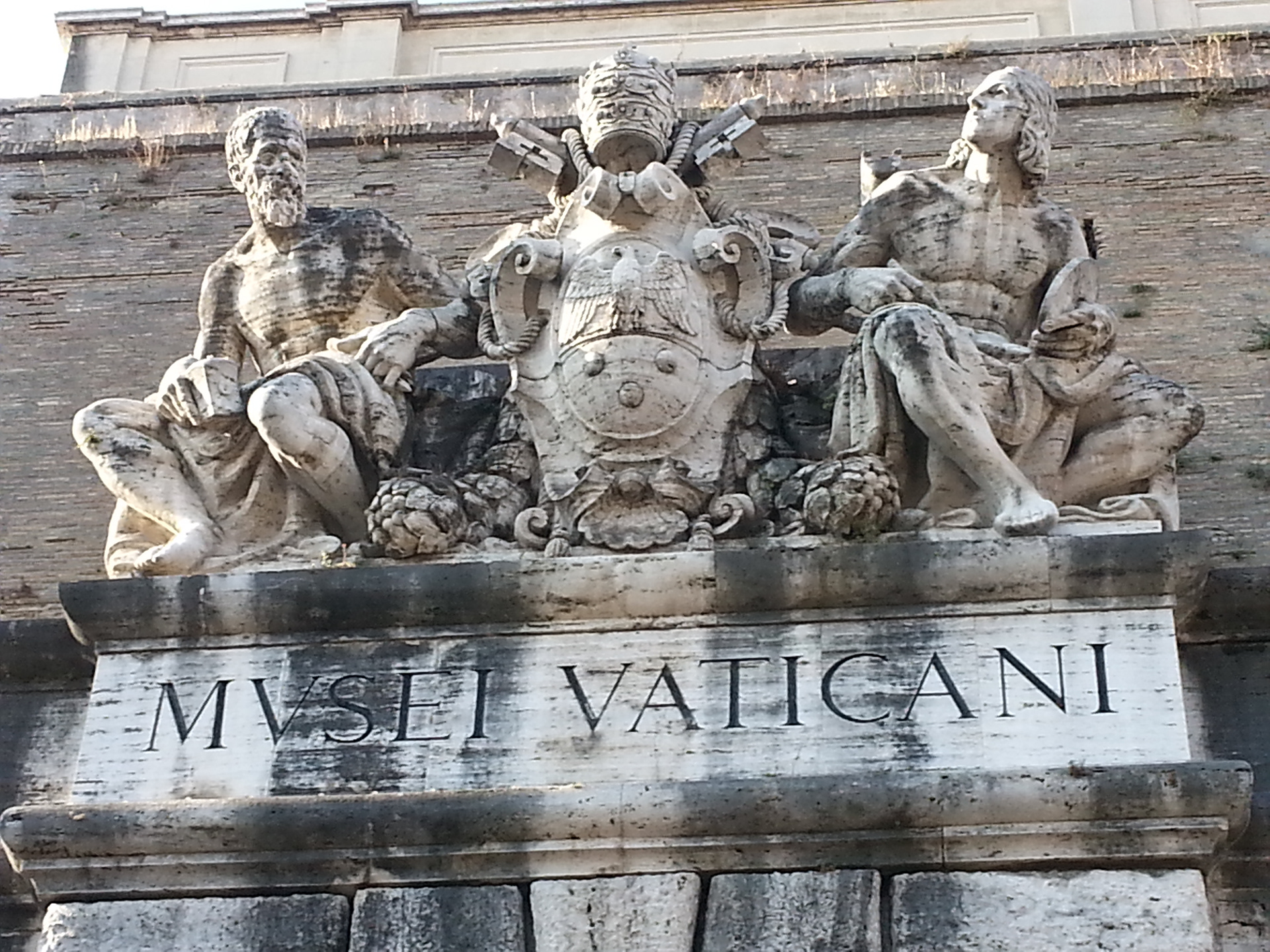


























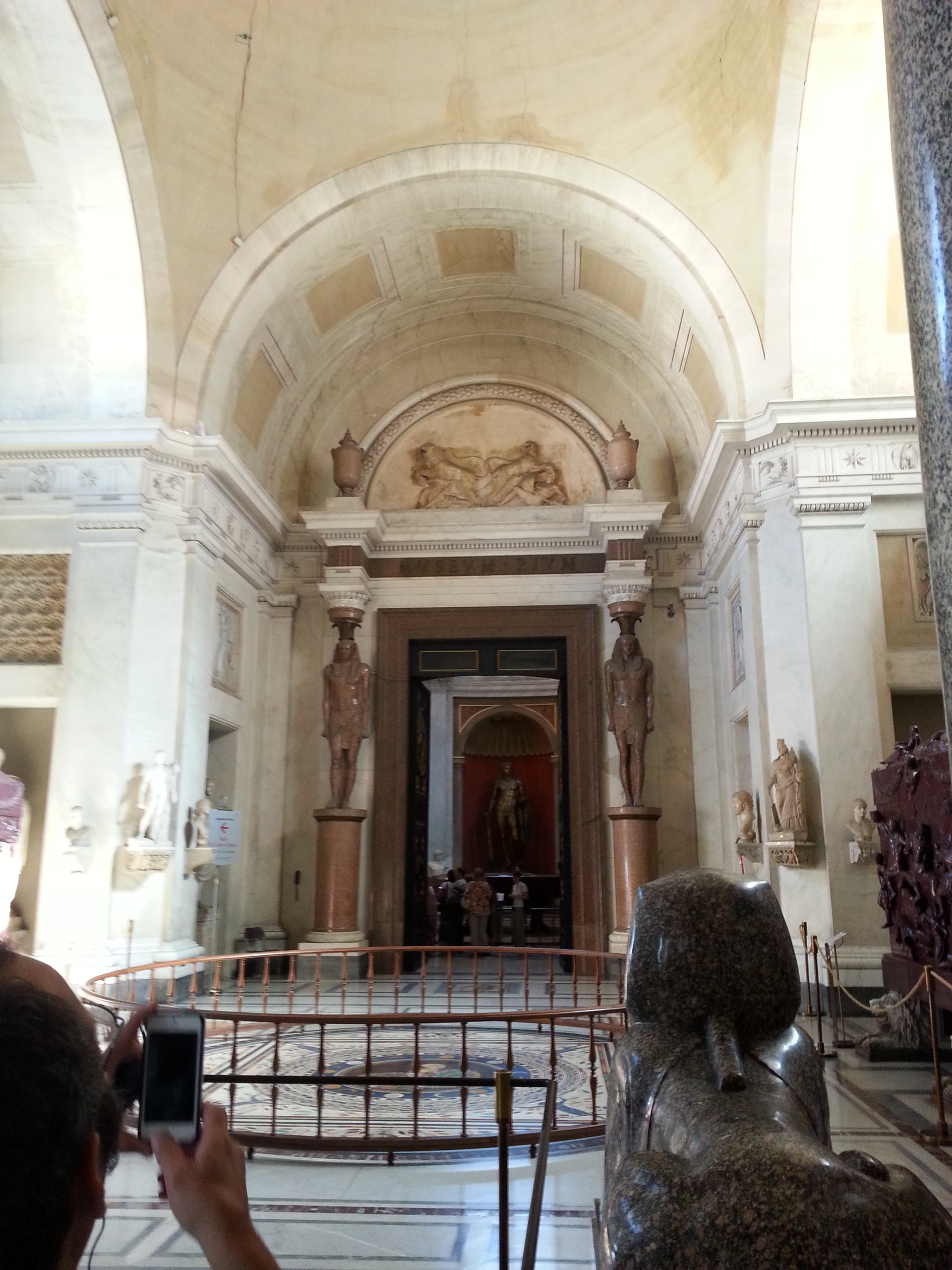








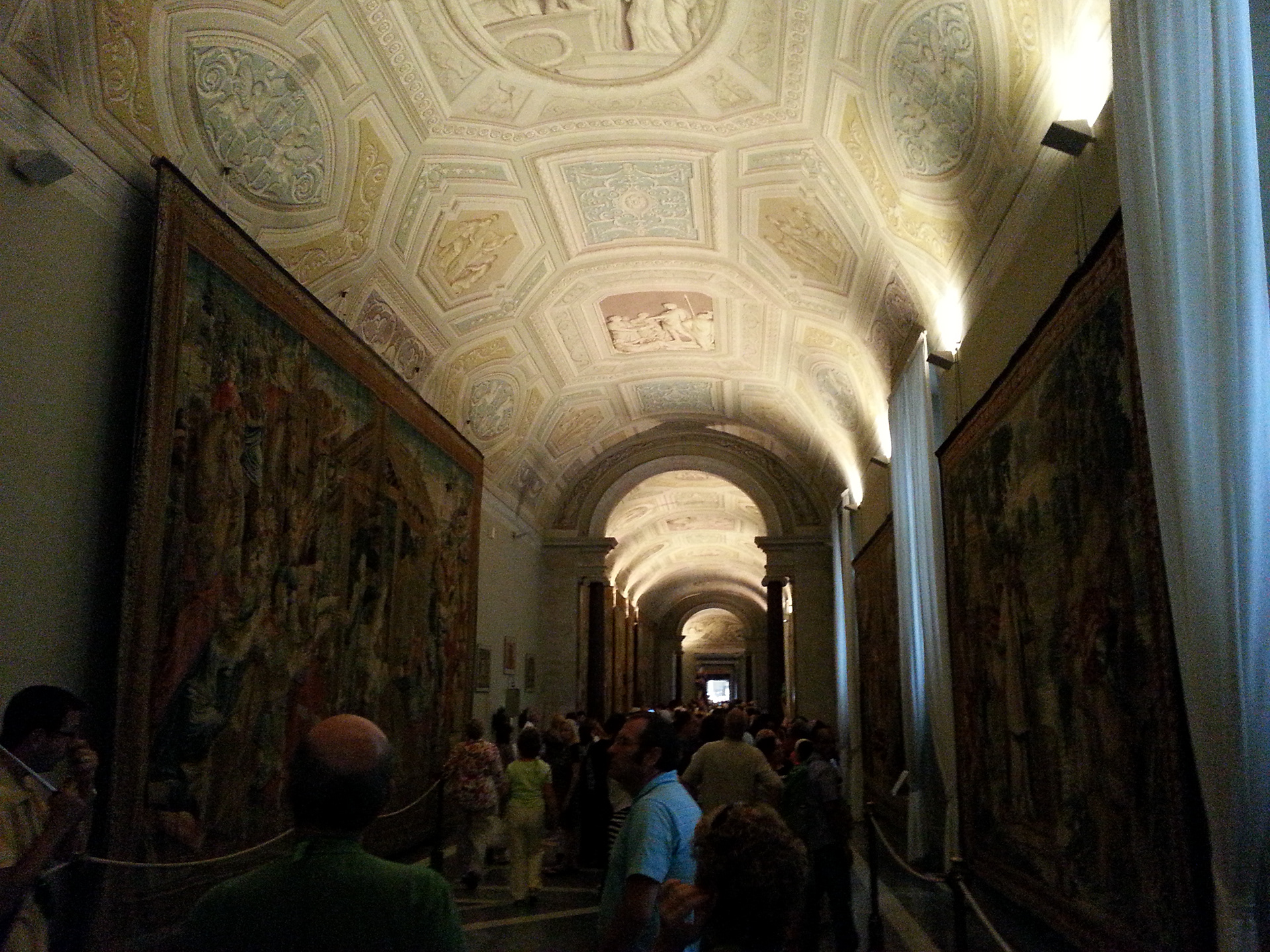
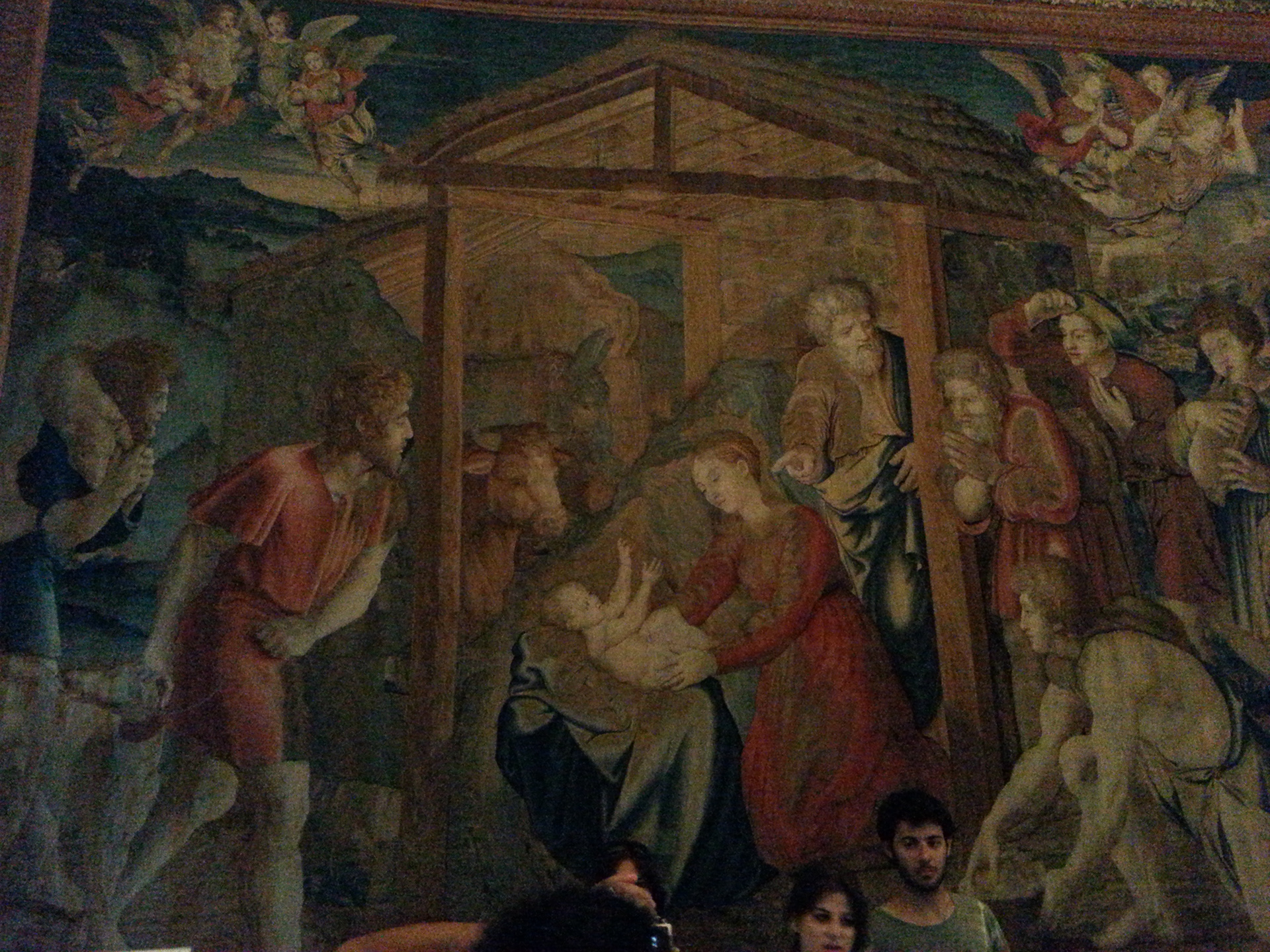

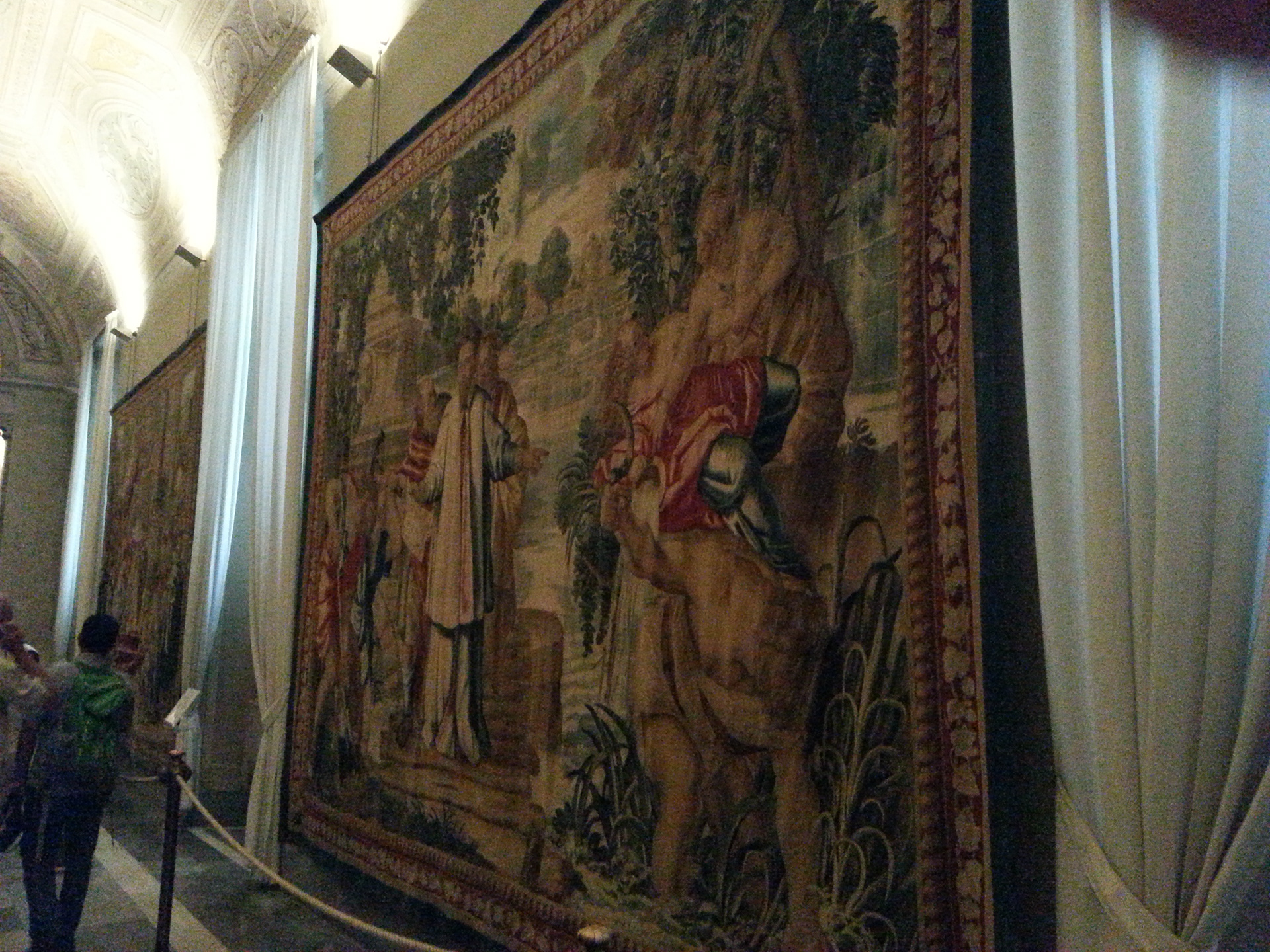










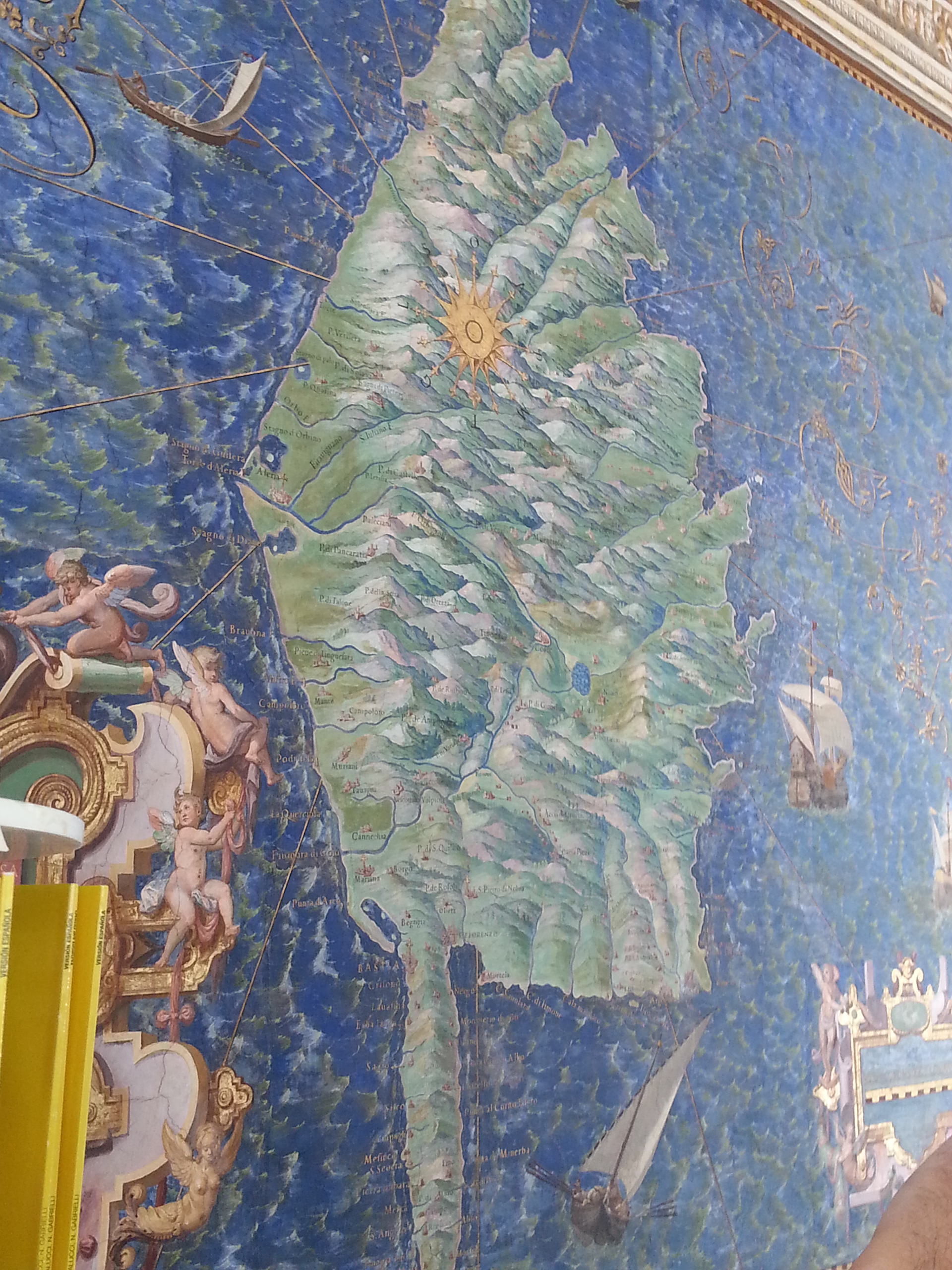




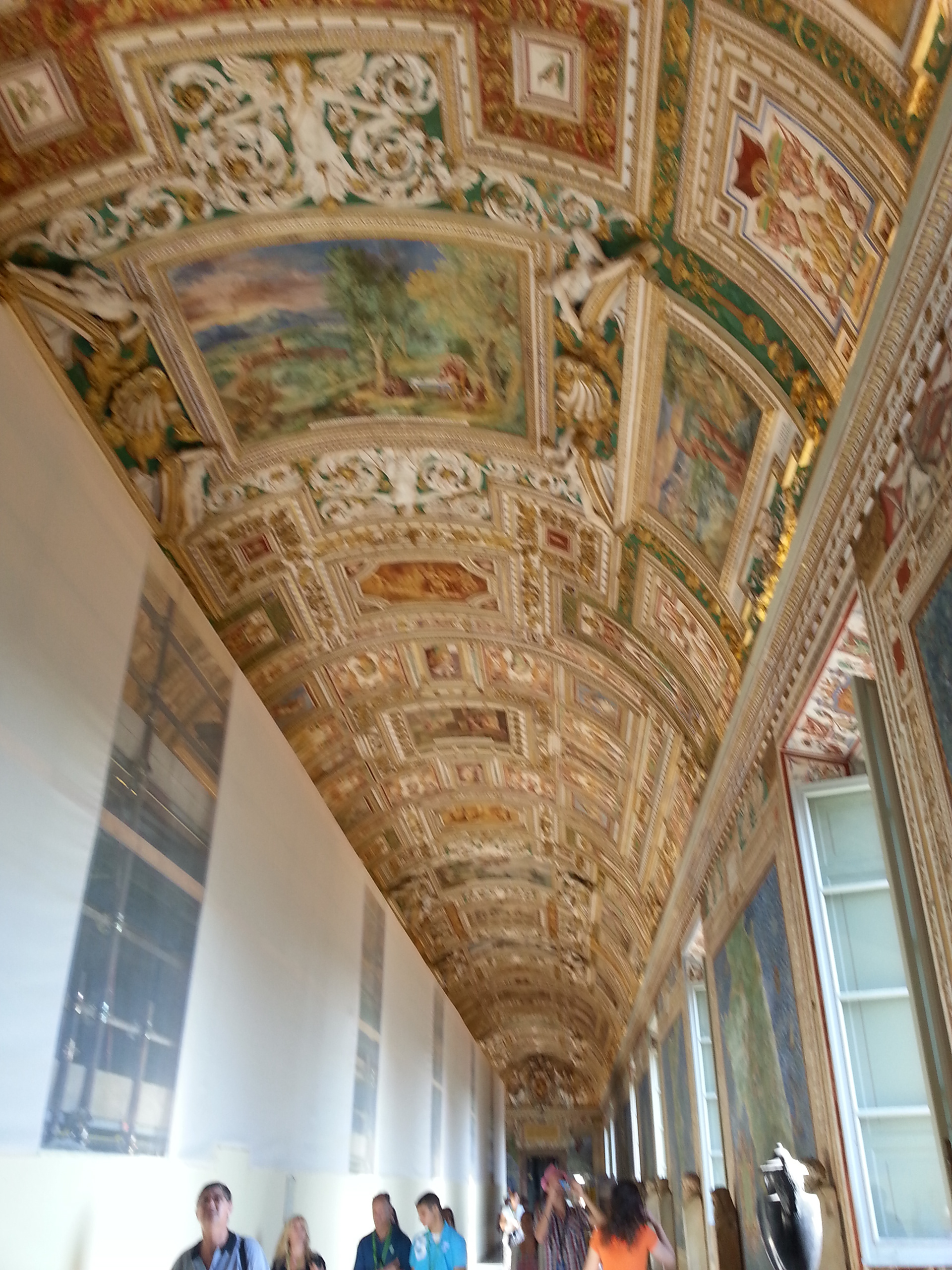

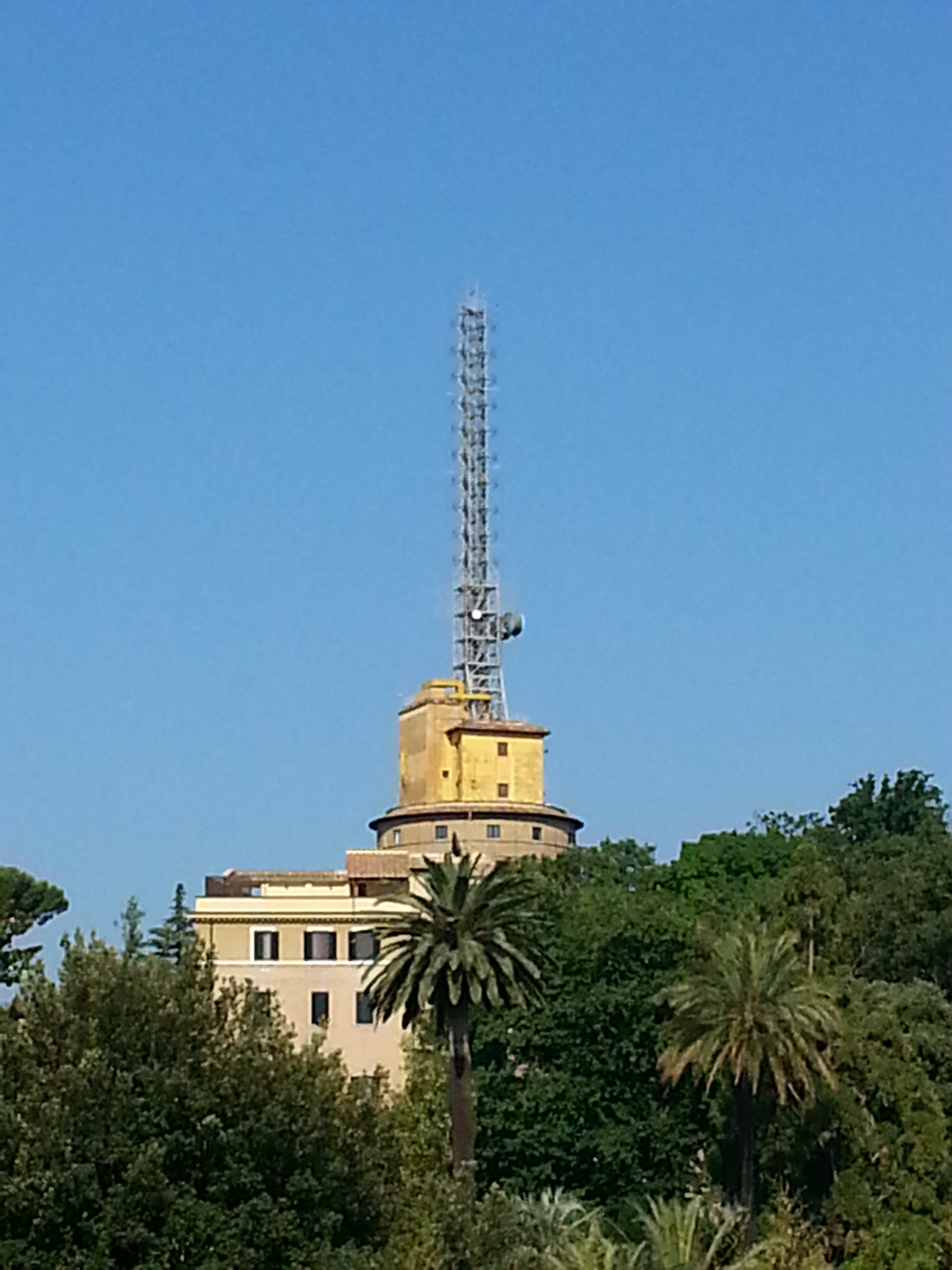







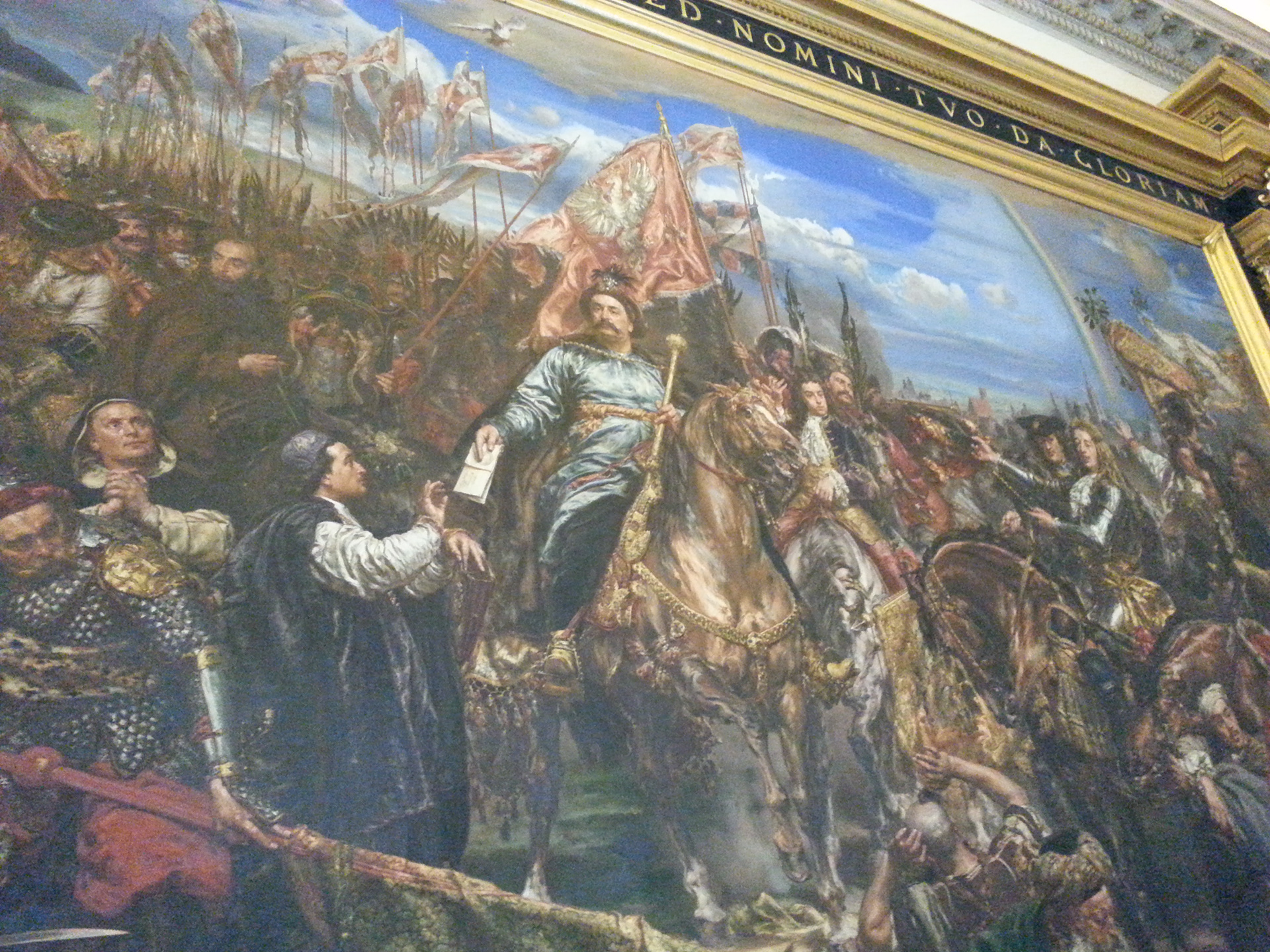







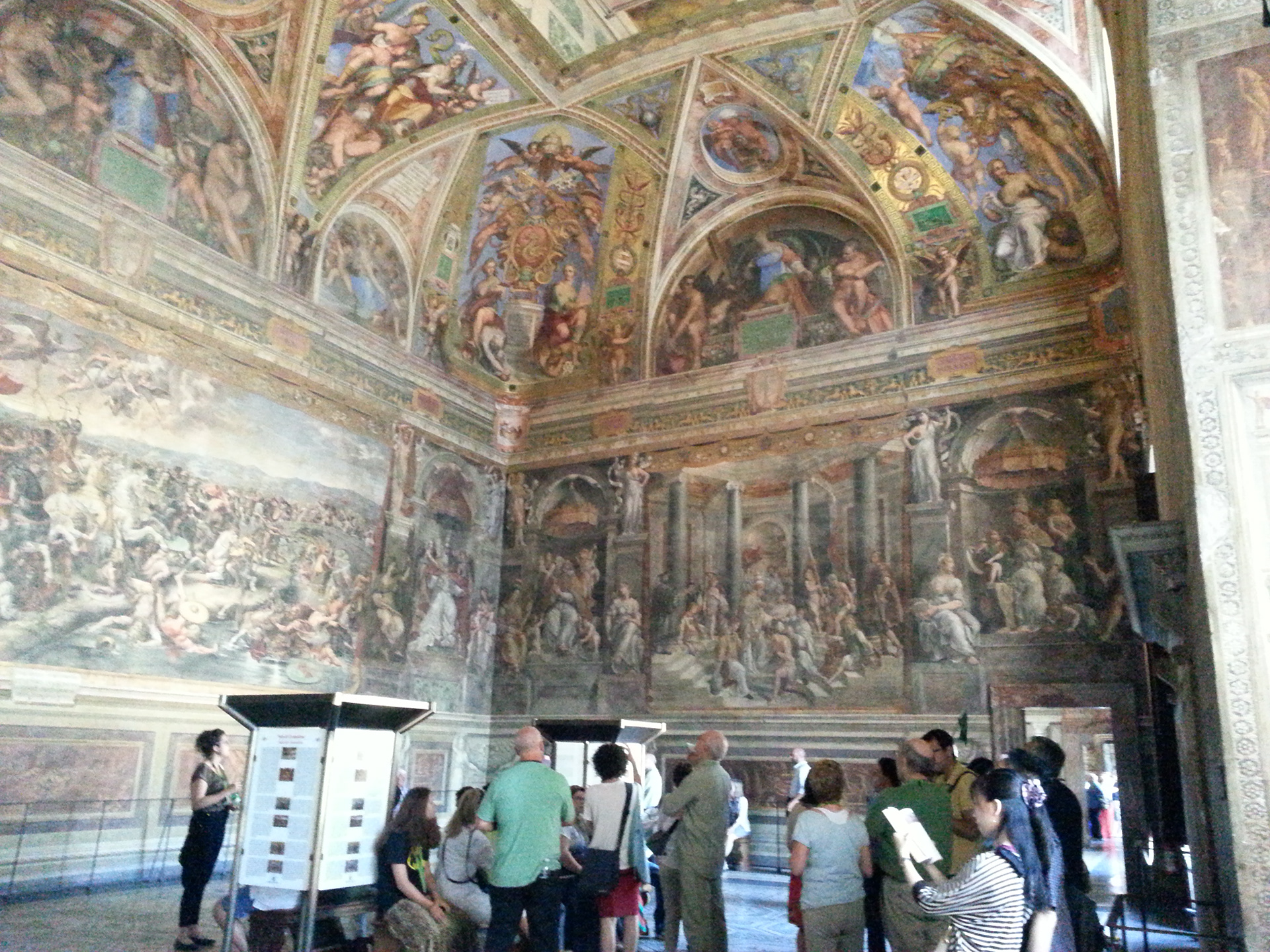


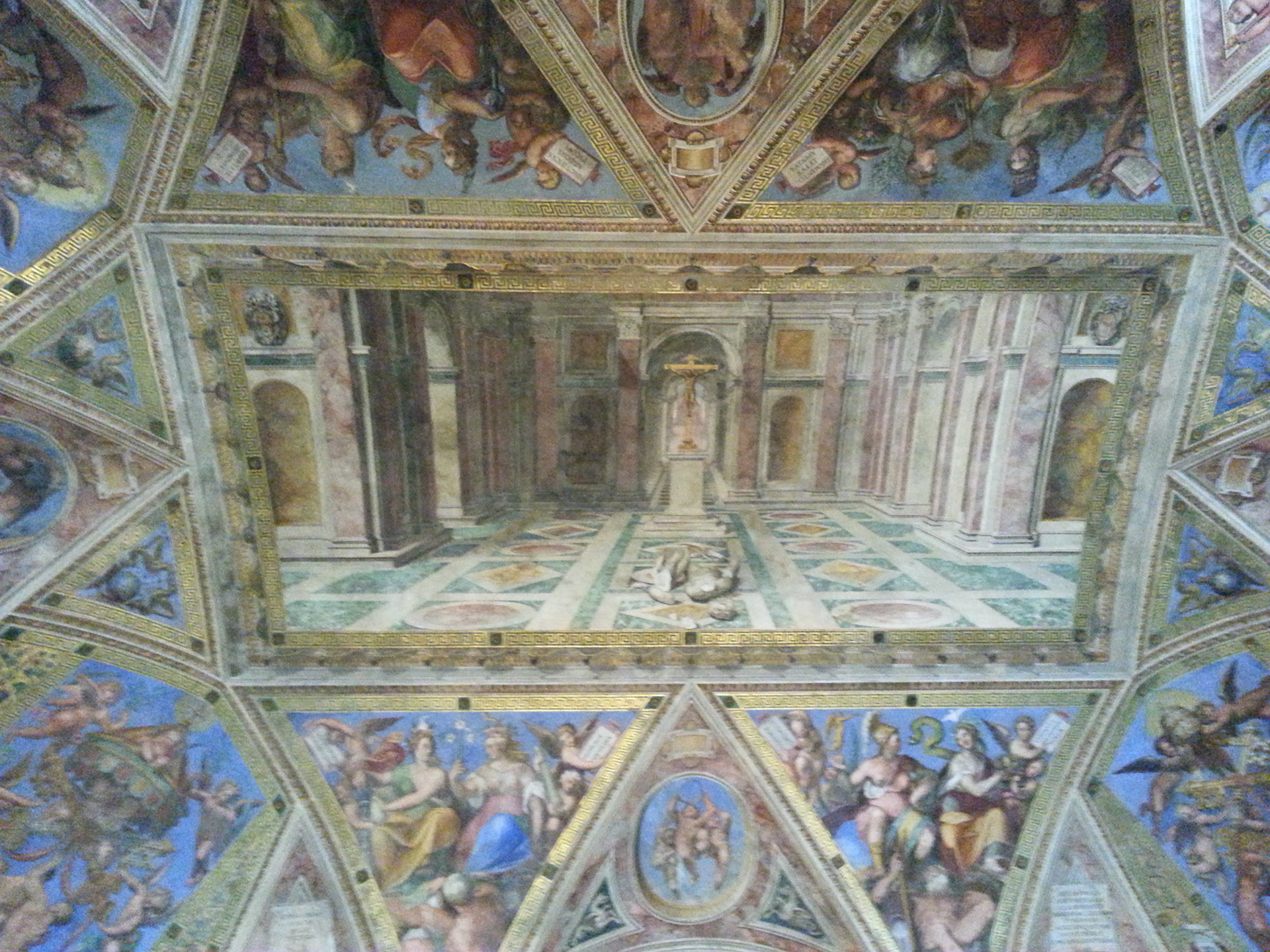





![The Liberation of Saint Peter is a fresco painting by the Italian High Renaissance artist Raphael.[1] It was painted in 1514 as part of Raphael's commission to decorate with frescoes the rooms that are now known as the Stanze di Raffaello, in the Apostolic Palace in the Vatican. It is in the Stanza di Eliodoro, which is named after The Expulsion of Heliodorus from the Temple. The painting shows how Saint Peter was liberated from Herod's prison by an angel, as described in Acts 12.](https://cdn.myportfolio.com/a5a305fa-efb5-4023-84e3-5bcb545c86fa/7798017a-4567-4e66-86f3-6cf5dbba6b29_rw_1920.jpg?h=f29f58c58c0a4a8ba03c4cf7e31d6467)

![The Liberation of Saint Peter is a fresco painting by the Italian High Renaissance artist Raphael.[1] It was painted in 1514 as part of Raphael's commission to decorate with frescoes the rooms that are now known as the Stanze di Raffaello, in the Apostolic Palace in the Vatican. It is in the Stanza di Eliodoro, which is named after The Expulsion of Heliodorus from the Temple. The painting shows how Saint Peter was liberated from Herod's prison by an angel, as described in Acts 12.](https://cdn.myportfolio.com/a5a305fa-efb5-4023-84e3-5bcb545c86fa/80318006-72a0-45f8-aa01-8d7c97959595_rw_1920.jpg?h=6f1967167cd1a6d87bb63cd3b01c50d2)





















